English Version
Hello dear community of travellers. A week ago I visited a very interesting museum in Havana that opened again to the public after a time of restoration. It is the National Museum of Cuban Music, as you know Cuba is a country with a high cultural and patrimonial value, and one of them is the Cuban music made up of a mixture of rhythms coming from different regions of the planet, from Europe, Africa, the Caribbean, North America and Asia. This museum is housed in a luxurious colonial mansion dating from 1905, which was the property of a wealthy merchant. There is a valuable collection of musical instruments corresponding to the main stages of music from the time of the primitive community to the present day. If you are passing through the capital, I urge you to visit it. It is located on Capdevilla Street No. 1 between Habana and Aguiar, in the municipality of Habana Vieja.
The Museum is structured in two floors, where on the ground floor we have the lobby and the rooms corresponding to the colonial and republican stages, while the first floor is mainly dedicated to the Revolution, Nueva Trova and Contemporary stages.
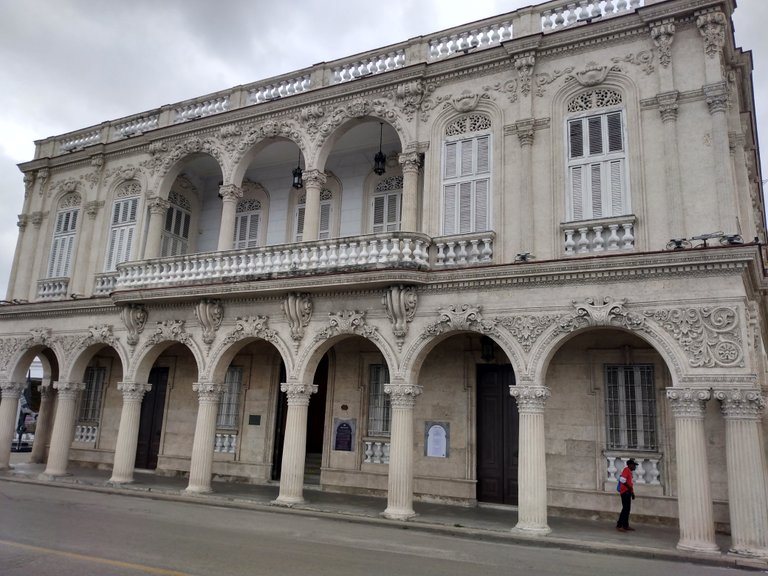
In the lobby we find a cylinder organ that was used at the beginning of the 20th century.
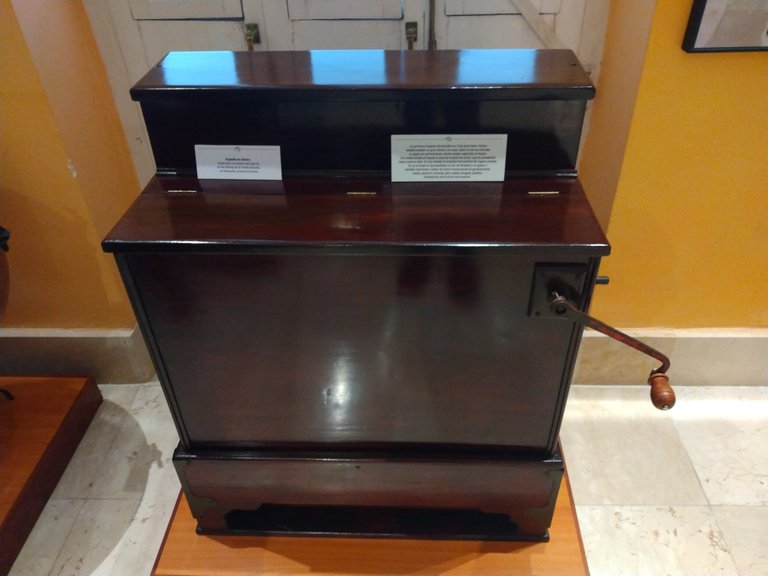
Next to it is one of the original notes of the Cuban national anthem, written by Perucho Figueredo in 1867.
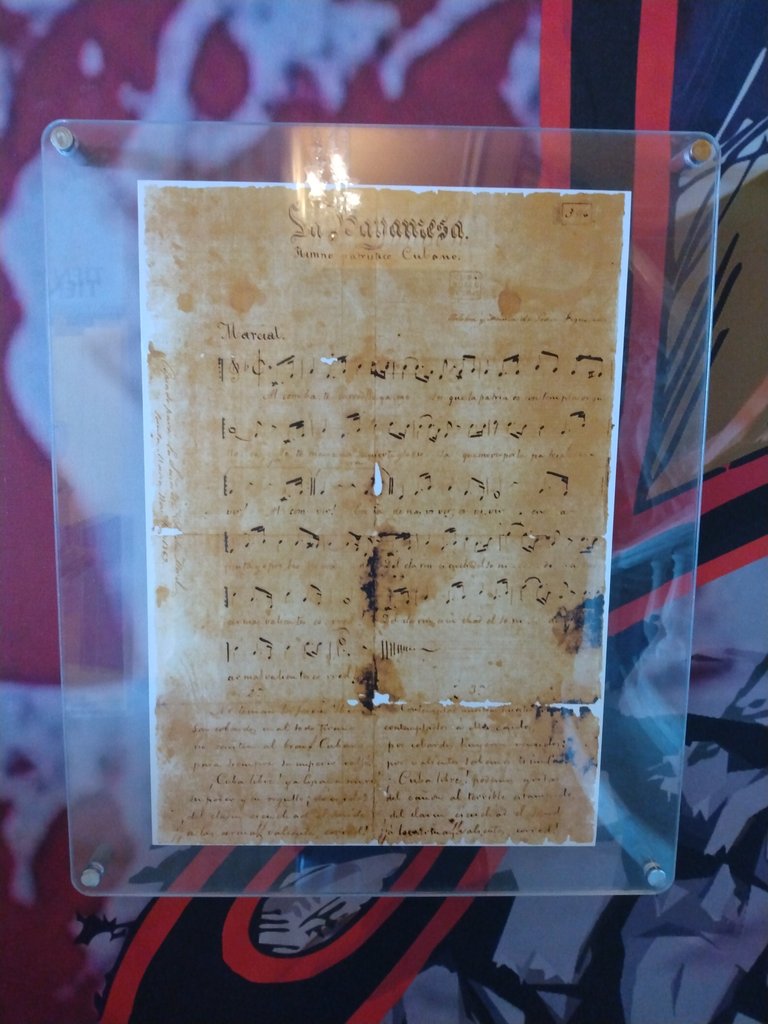
We can also see a striking mural painting that pays homage to Perucho Figueredo.
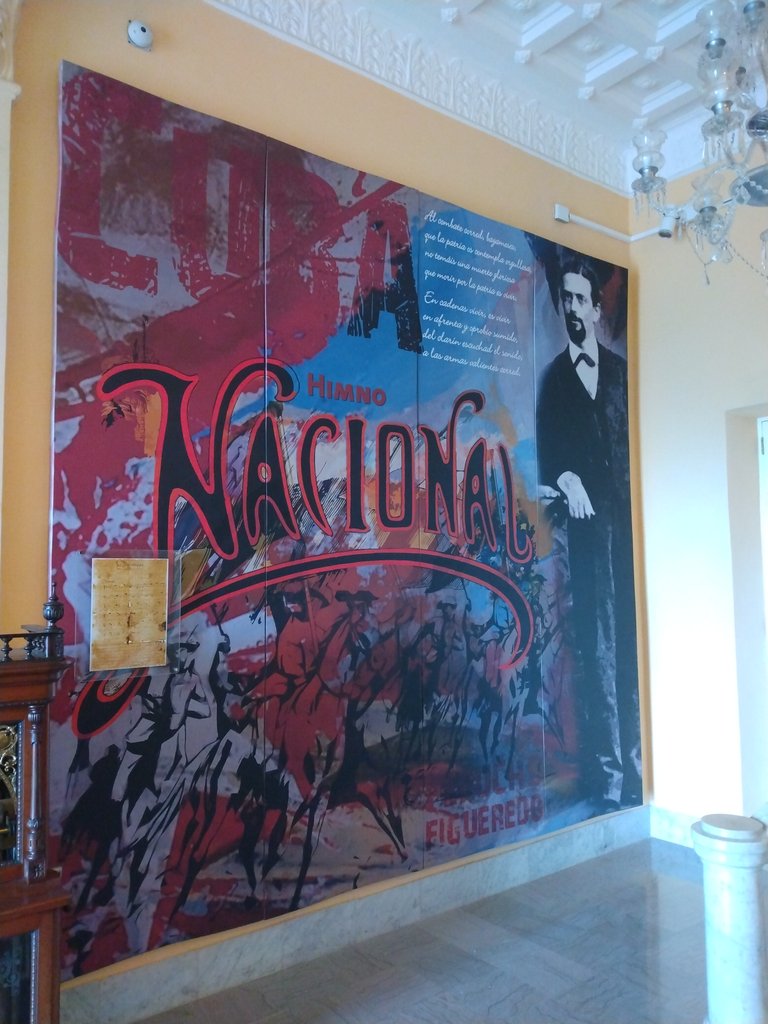
We begin our tour with the collection of rustic musical instruments used by the first inhabitants of the island of Cuba. Where we can see how they used materials available in their environment such as wood, bones, etc, to express their musical art.
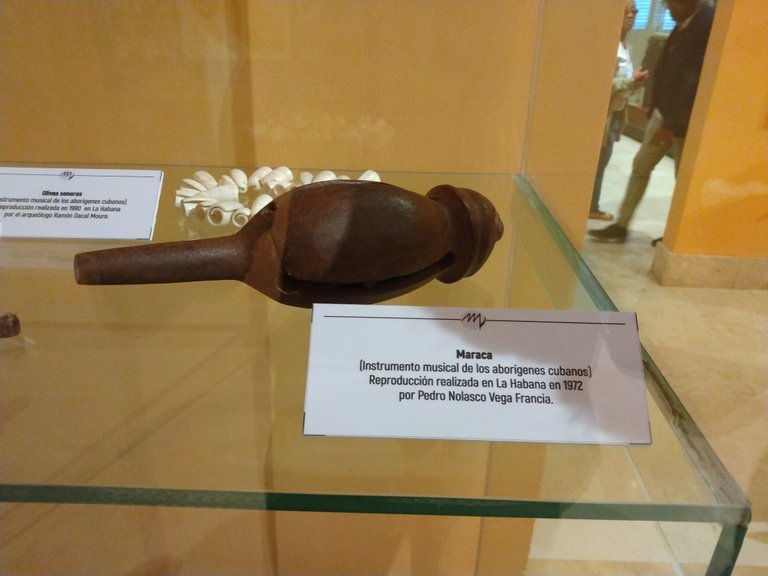
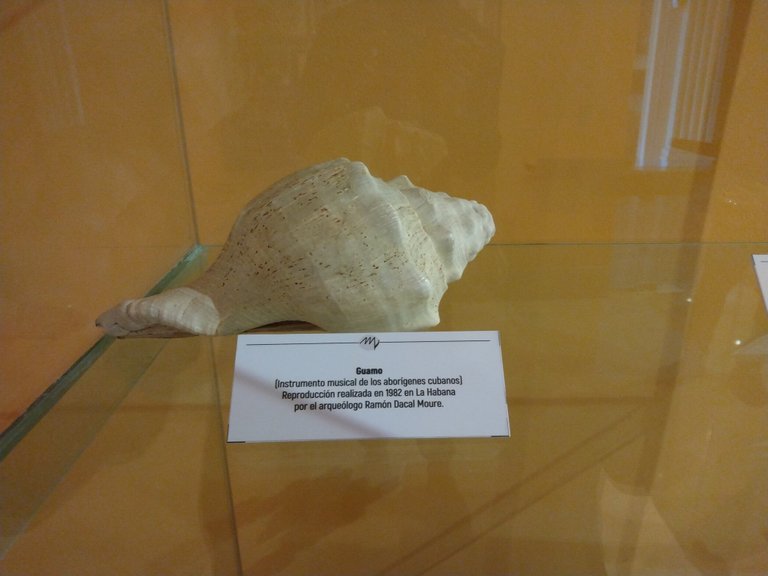
After the aboriginal population was exterminated due to the intense exploitation by the Spanish colonisers, new labour was needed, so slaves from the African continent arrived in Cuba. And it is here where the mixture with African folklore began, incorporating instruments and rhythms of the yoruba culture.
Collections of drums and other musical instruments used during ceremonial dances in the yoruba and abakua religions.
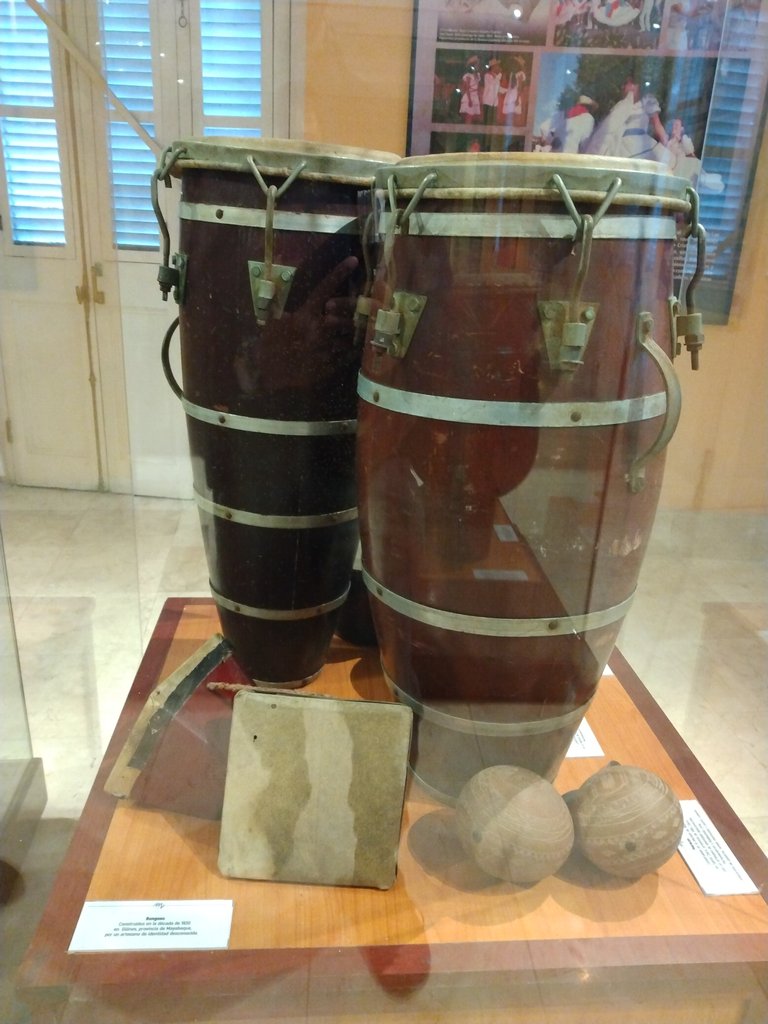
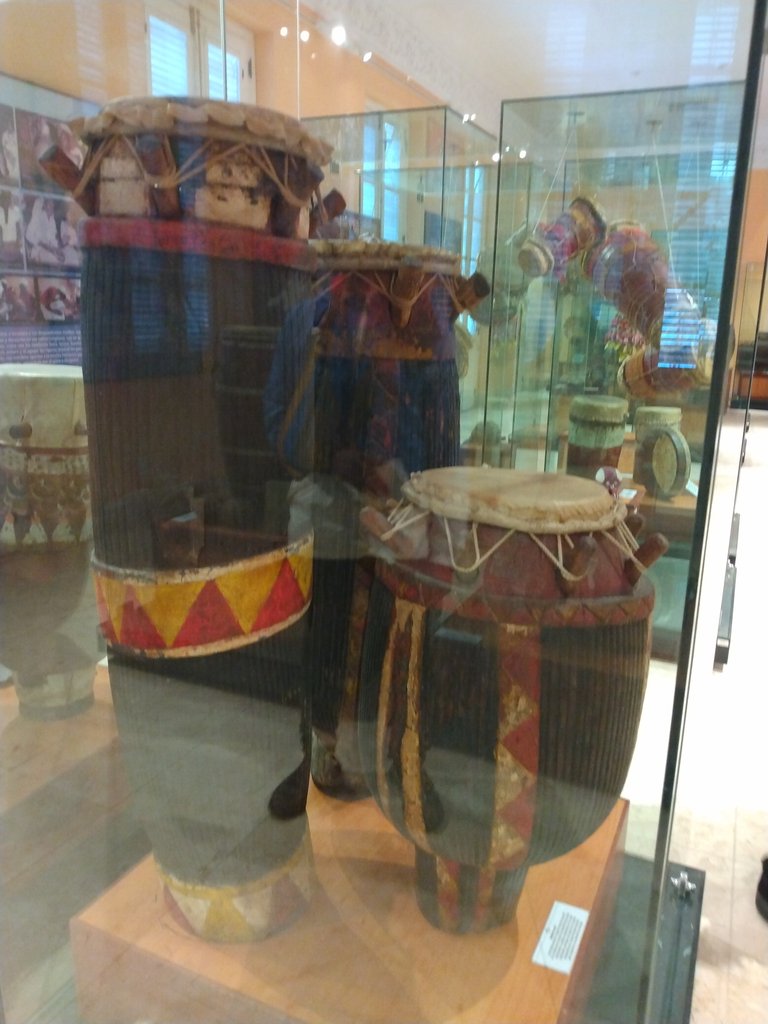
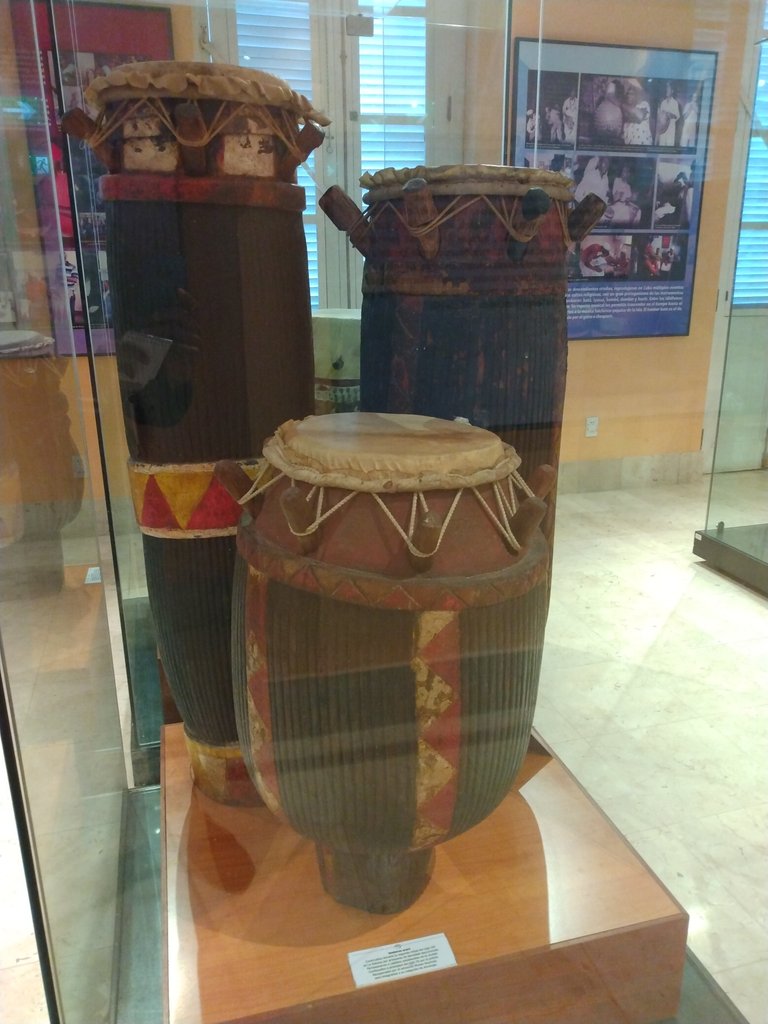
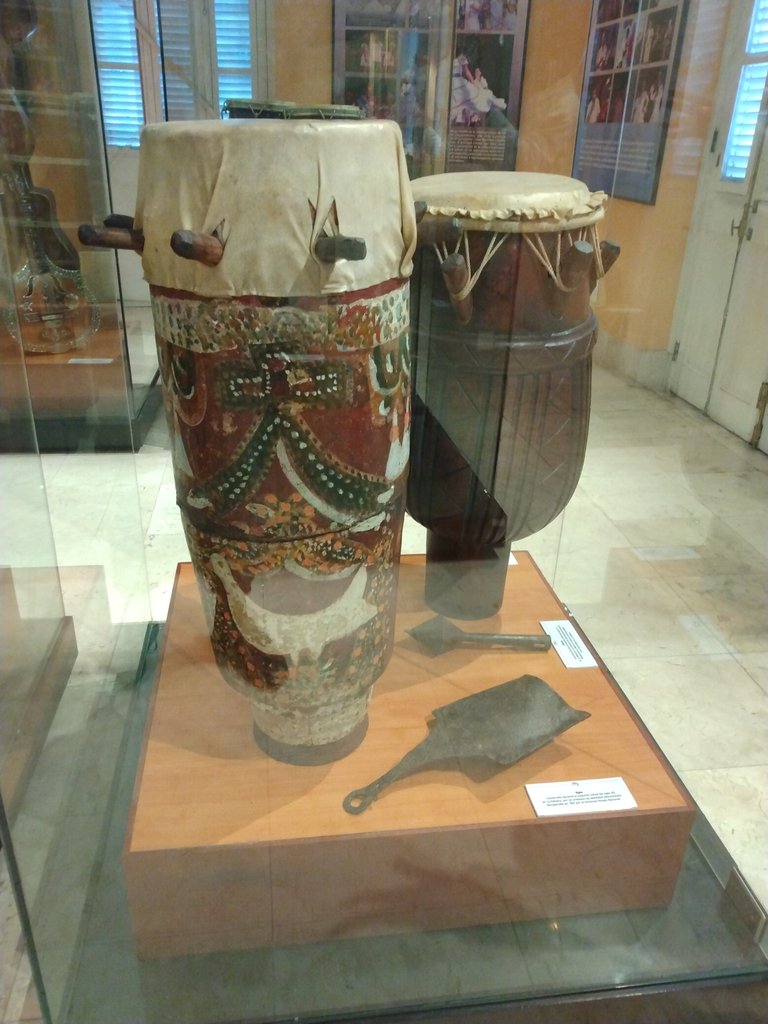
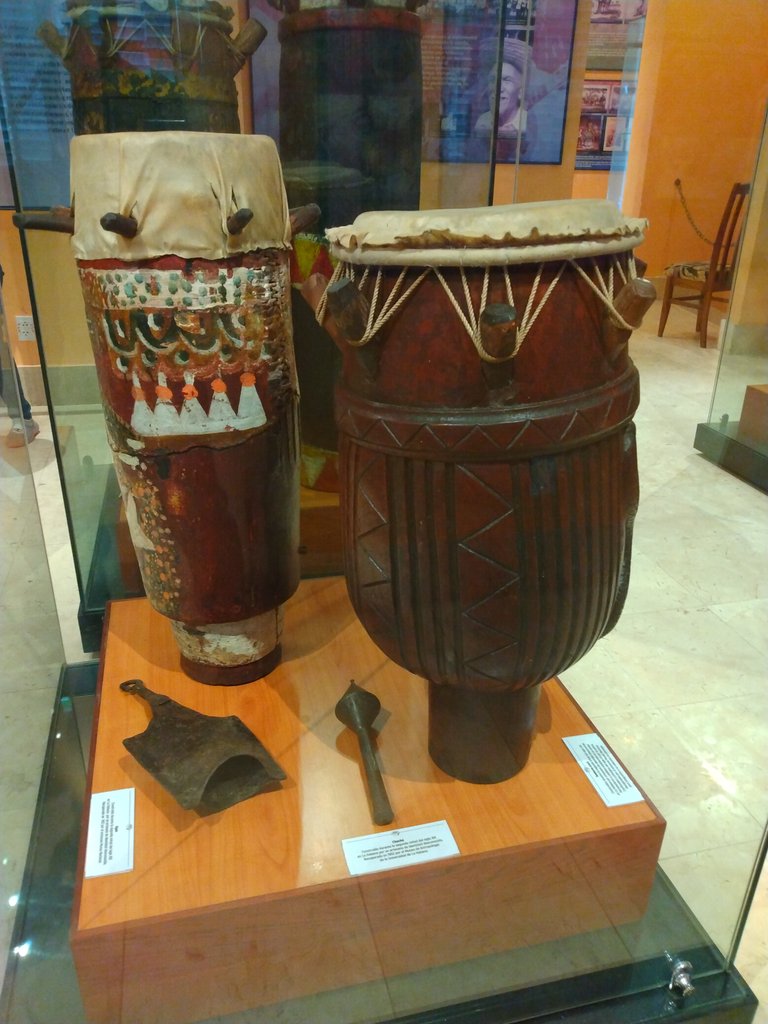
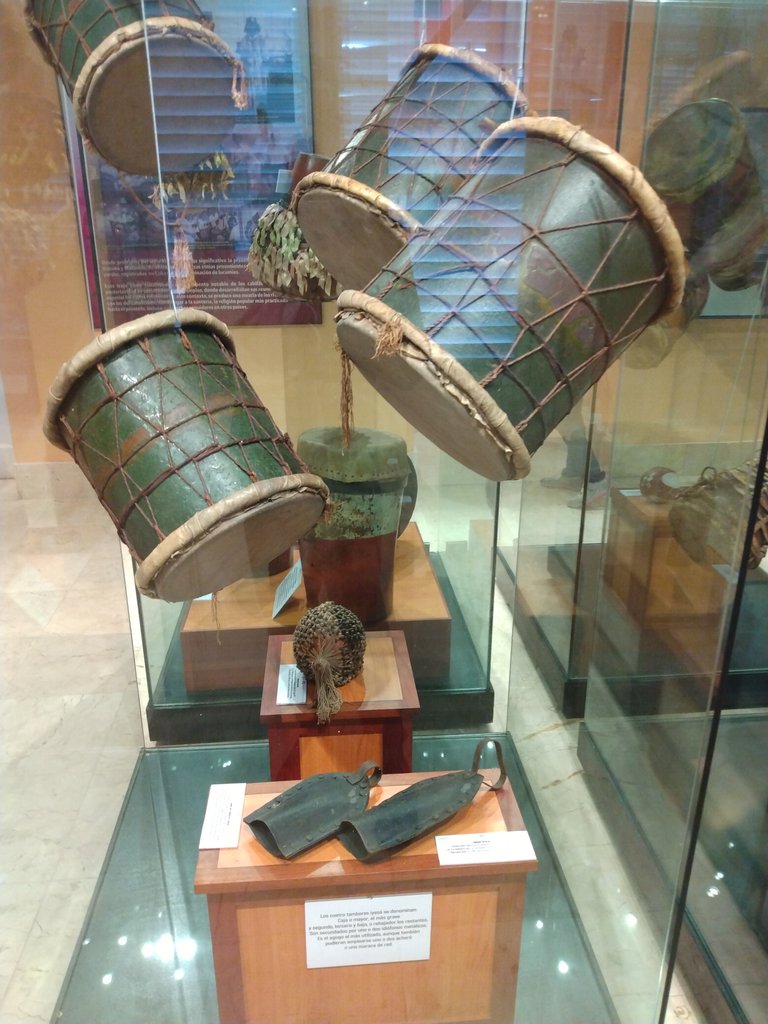
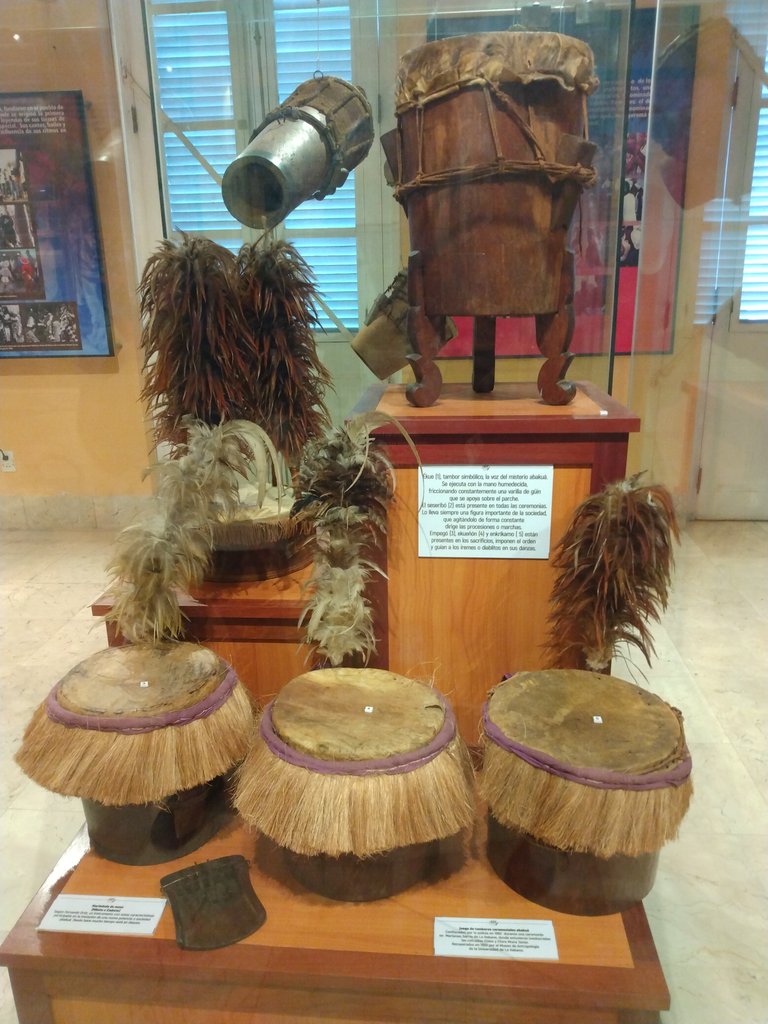
Typical instruments of the ‘’Conga‘’ genre, where, apart from the drums, the use of common materials such as car tyres and a foreign instrument like the Chinese cornet is characteristic, the latter as a distinctive element of the conga originating from the eastern region of Cuba.
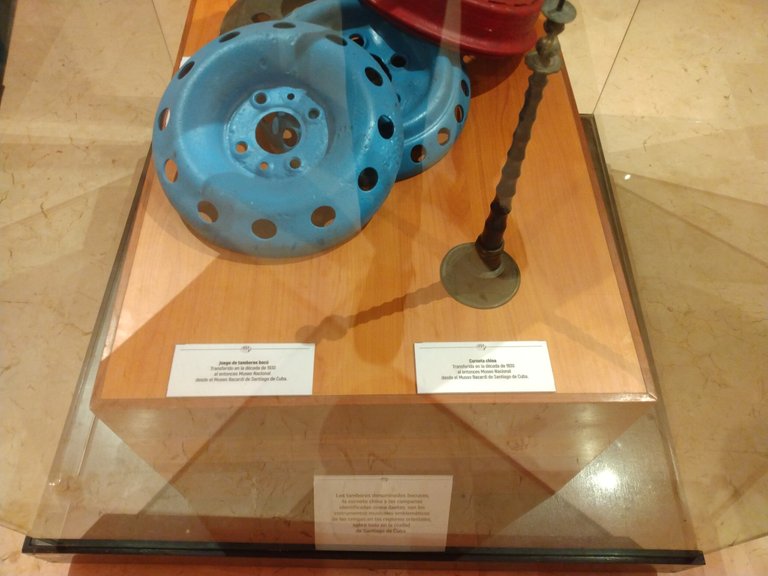
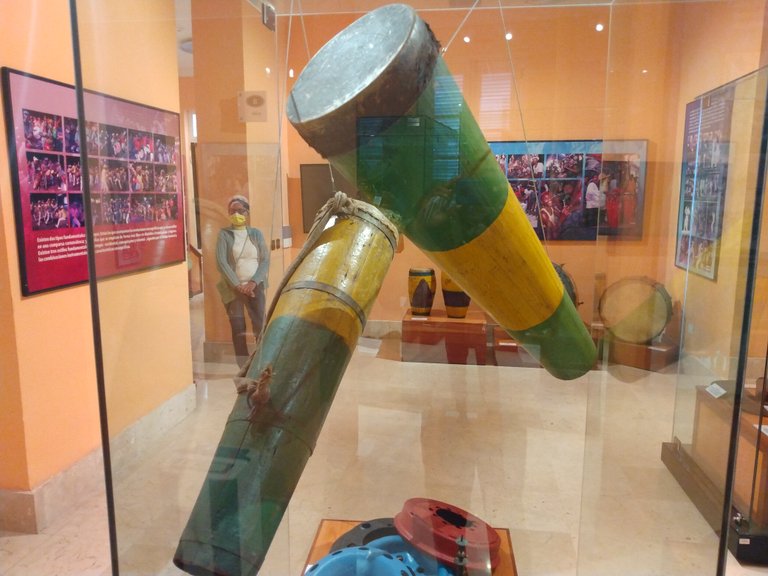
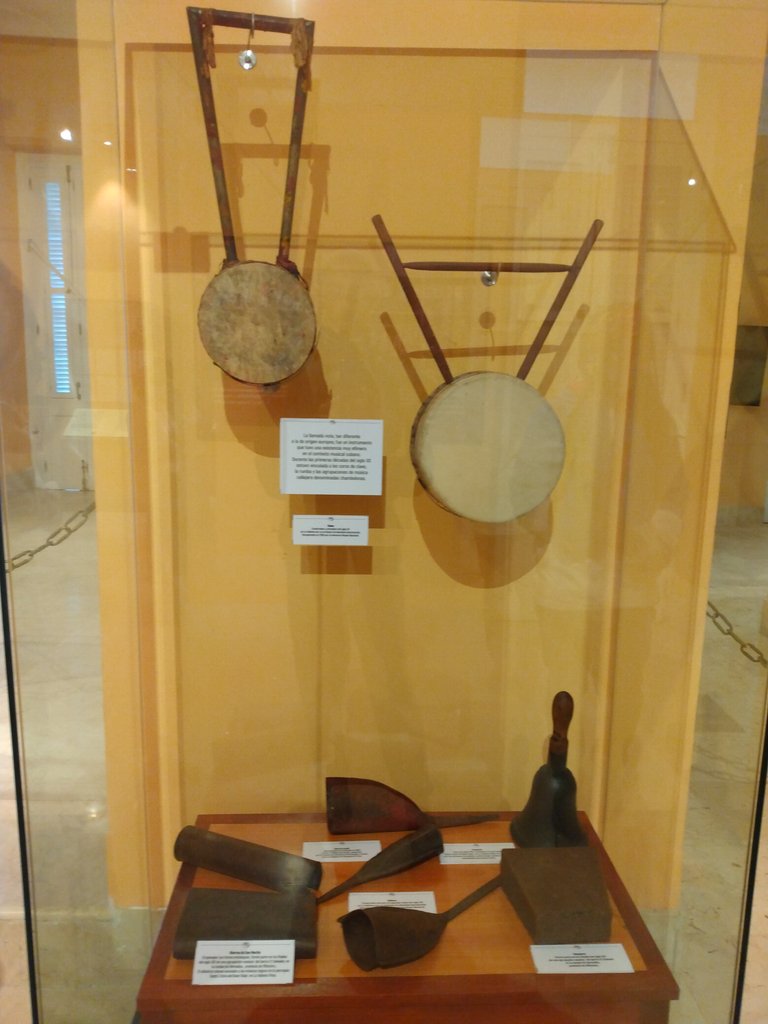

With the incorporation of slave labour from Haiti, other percussion instruments similar to those from Africa were added. This gave rise to the sonority known as Tumba Francesa. This migration began in eastern Cuba and then spread to the rest of the country.
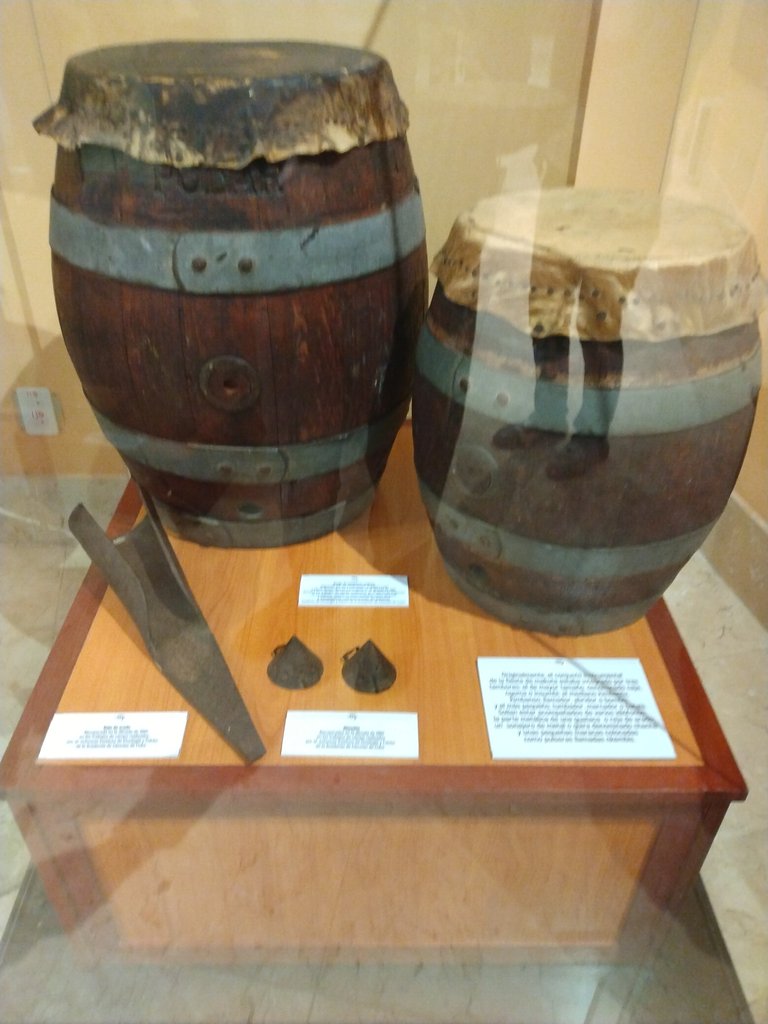
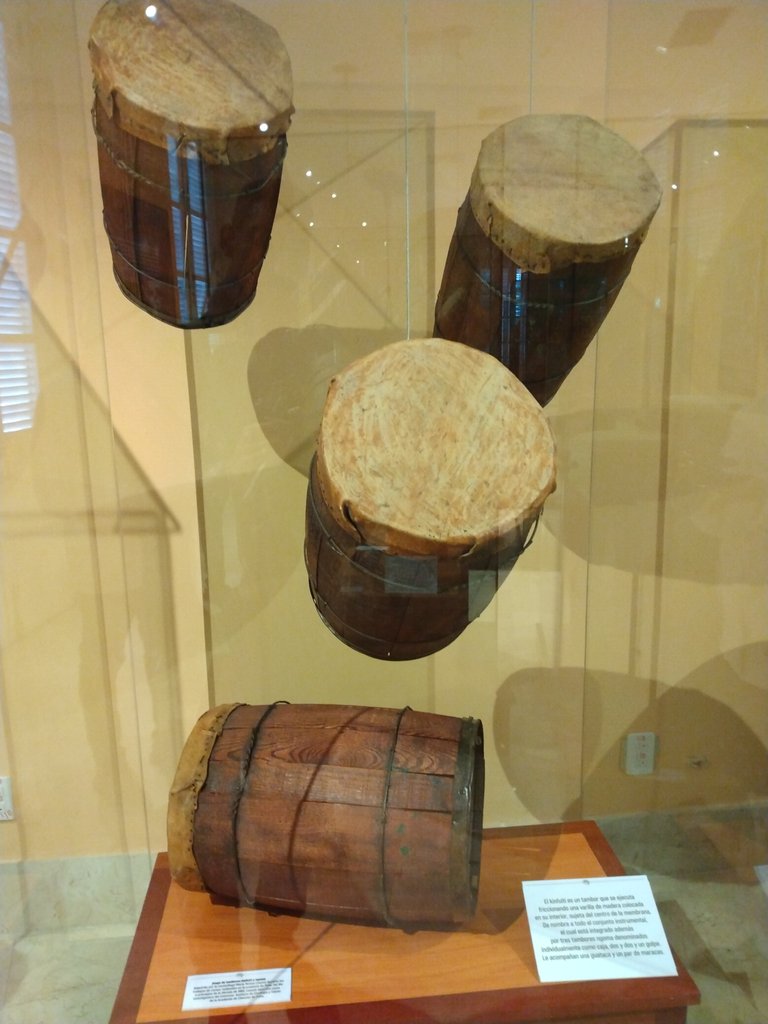
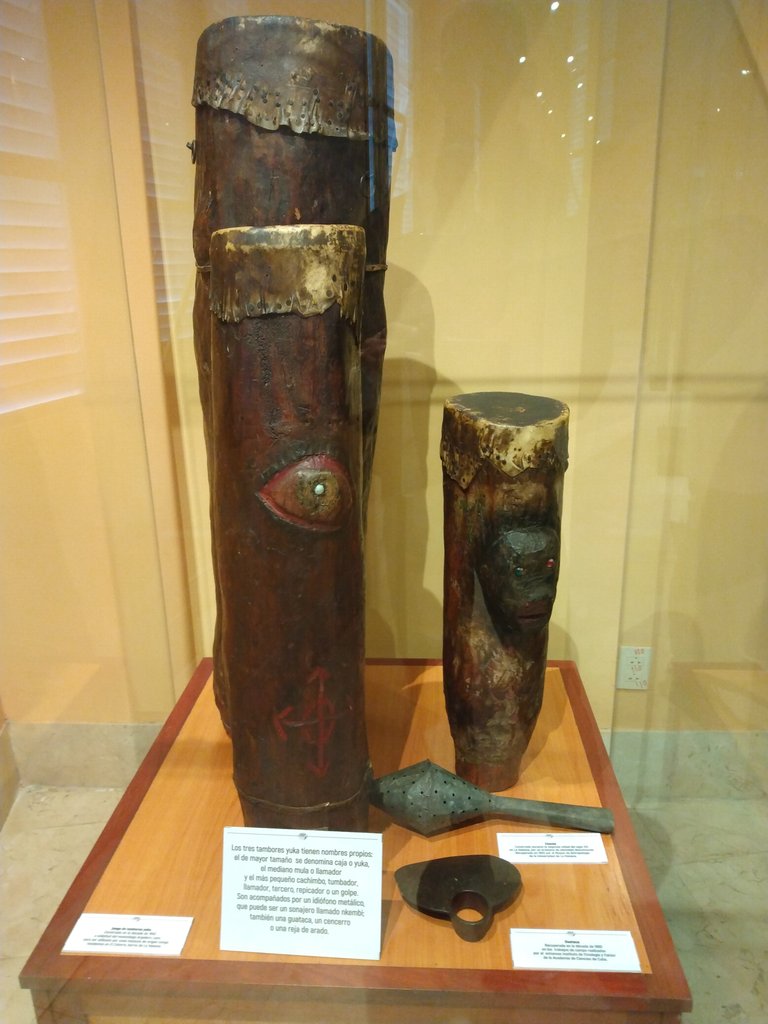
The incorporation of stringed instruments such as the lute, the guitar and the tres during the colonial and pre-republican periods in the 16th-19th centuries. In the central region of the country, a very autochthonous rhythm known as the ´´punto guajiro or cubano arose´´, which identified the Cuban peasantry. Within this rhythm, figures such as Celina González and Jesus Orta Ruiz (Indio Naborí) stood out. Over time, other instruments such as the clave, the bongo and the tumbadora were incorporated. It is important to note that genres such as the contradanza and the zapateo emerged during this period.
Typical costume worn by women when dancing the punto cubano. In this case we can see the dress worn by Celina Gonzales.
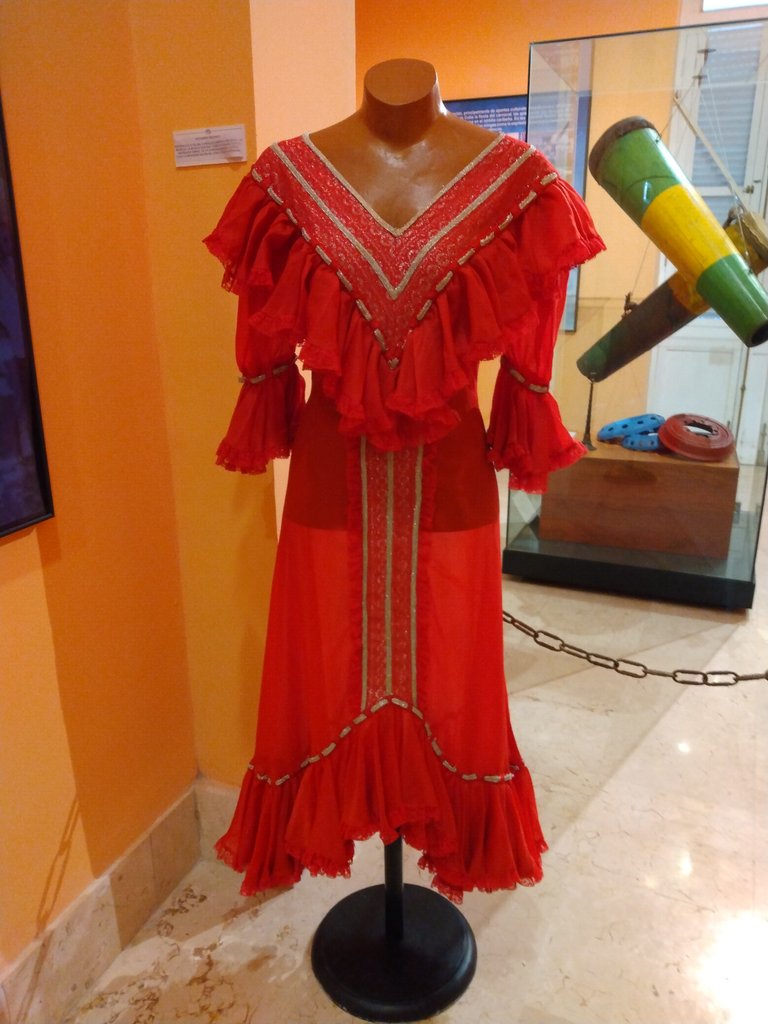
Posters with images of the famous Celina Gonzáles and her musical group.
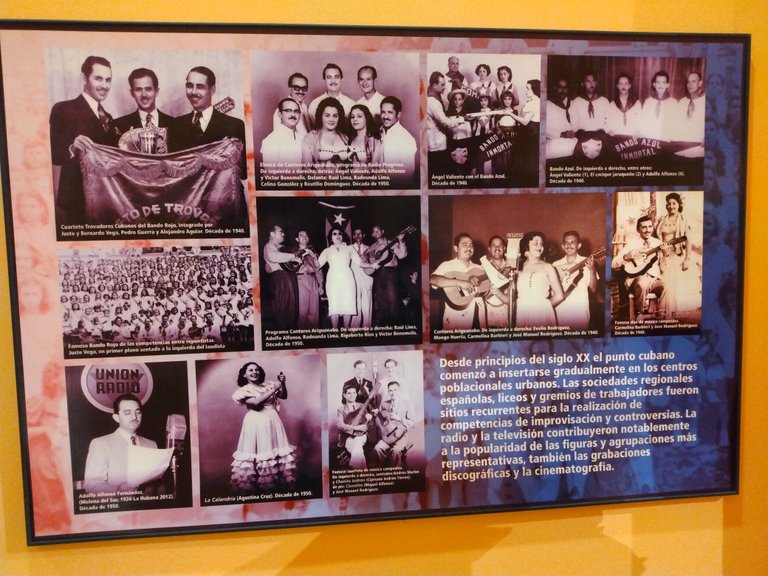
Jesús Orta Ruiz, also known as ´´El Indio Naborí´´, was a prominent Cuban poet and decimist.
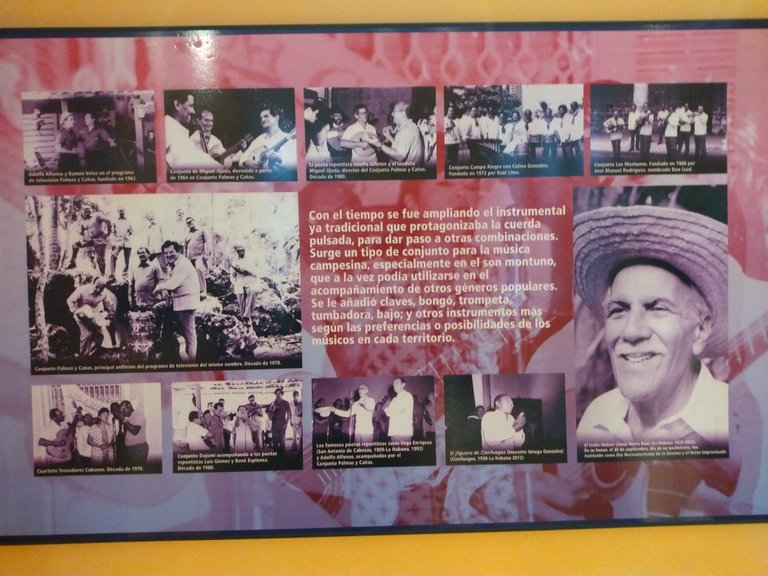
Instruments that commonly accompany the Punto Cubano.
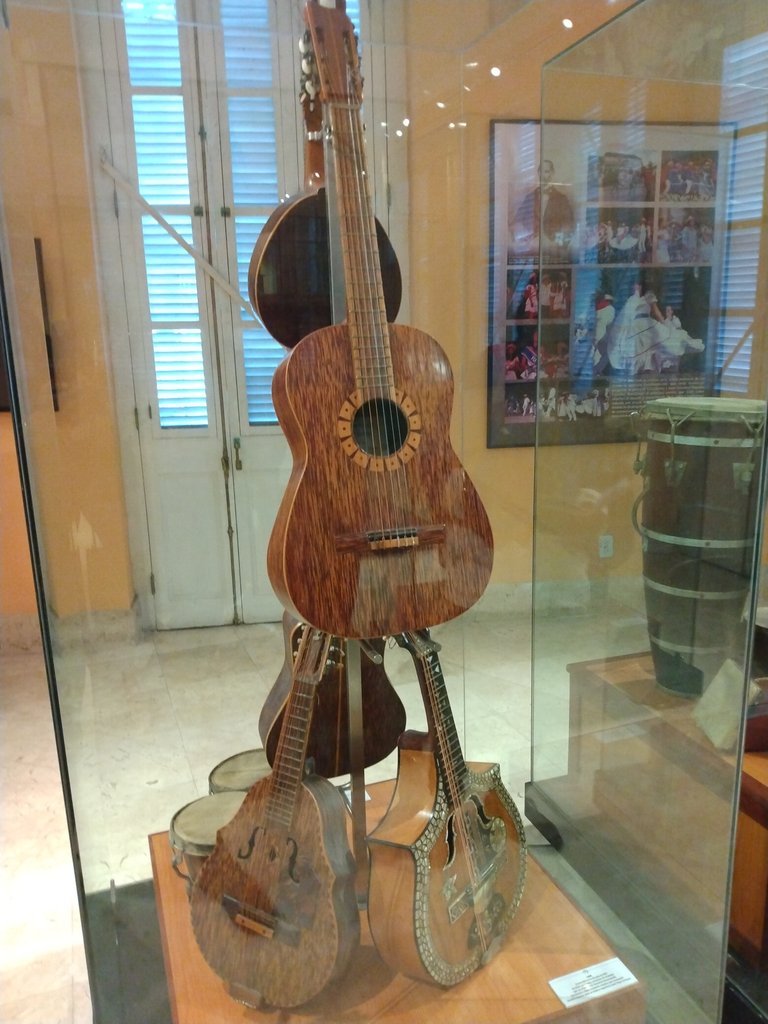
During the 19th century, Cuban composers of genres such as the contradanza, danzas and danzonetes, in which blacks and mulattos participated, contributed enormously to the development of pianism, making it part of the national idiosyncrasy.
Here are some of the classical scores composed at that time.
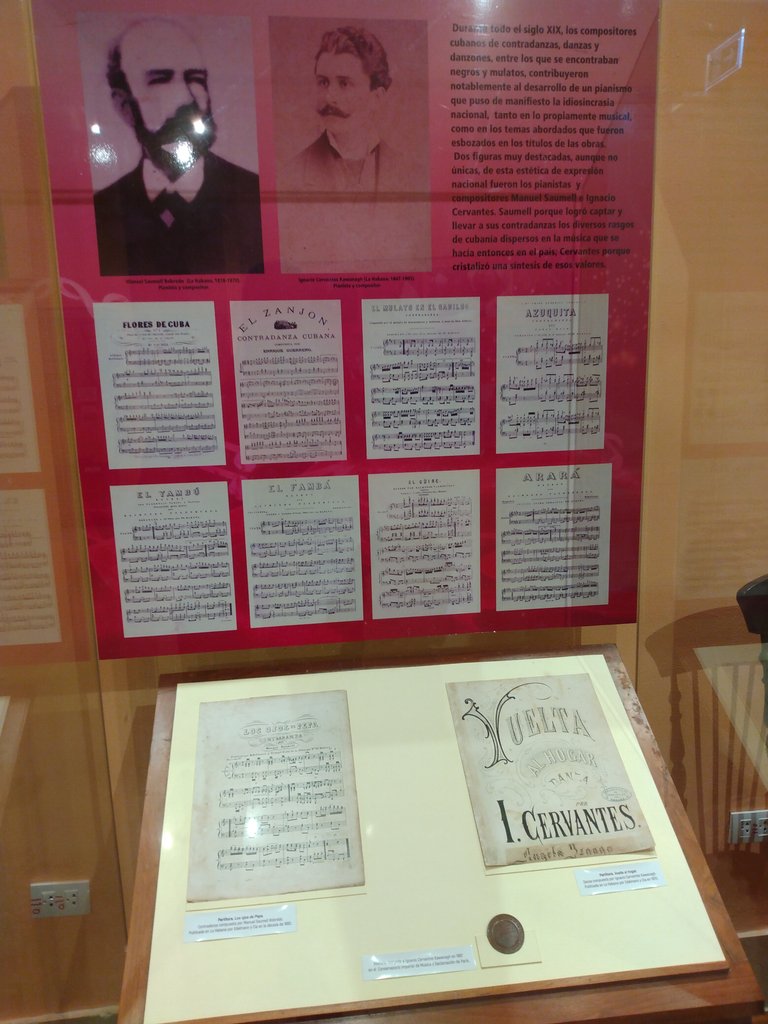
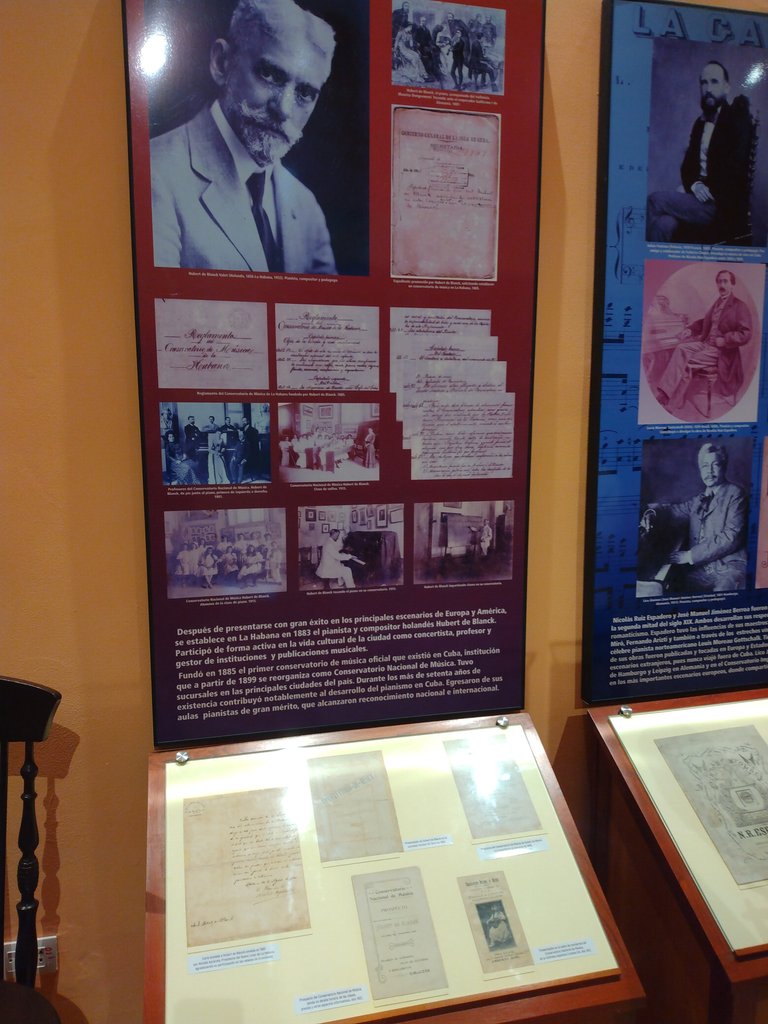
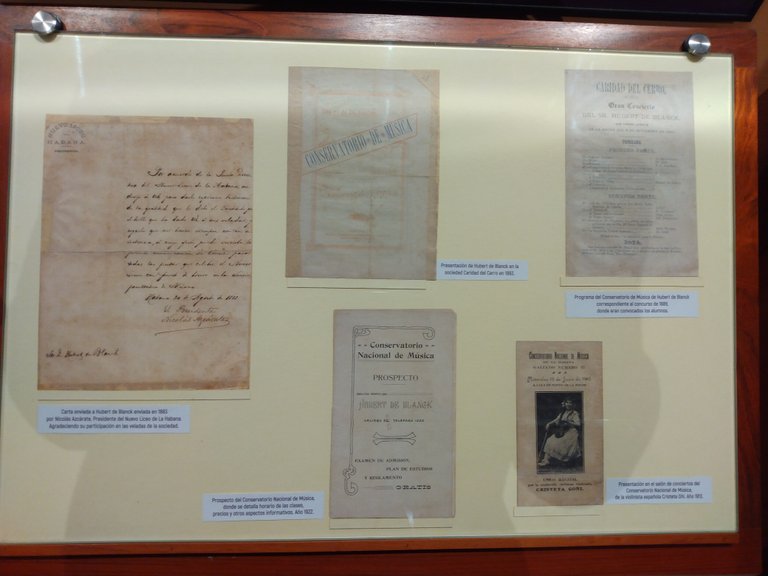
A vast collection of pianos from different countries is exhibited in the museum.
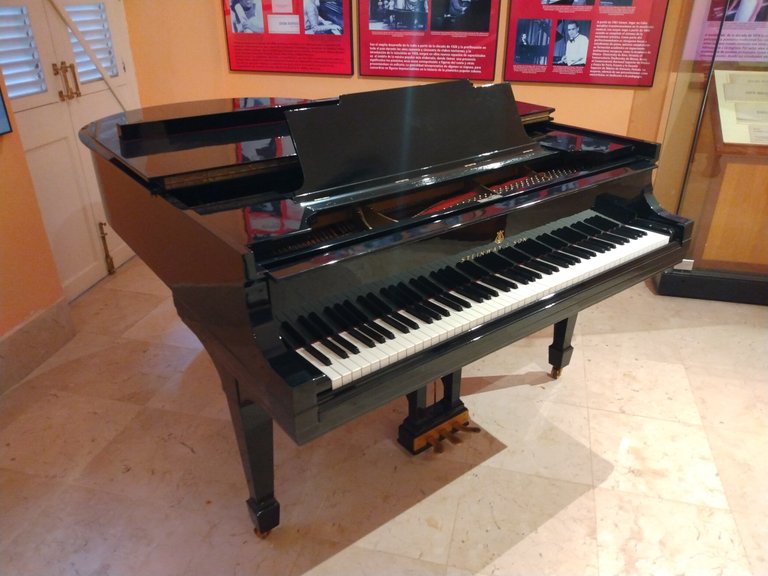
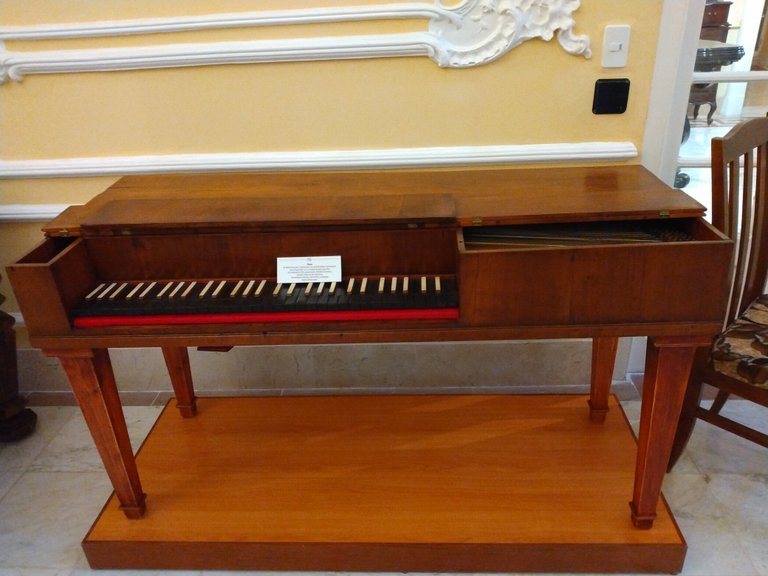
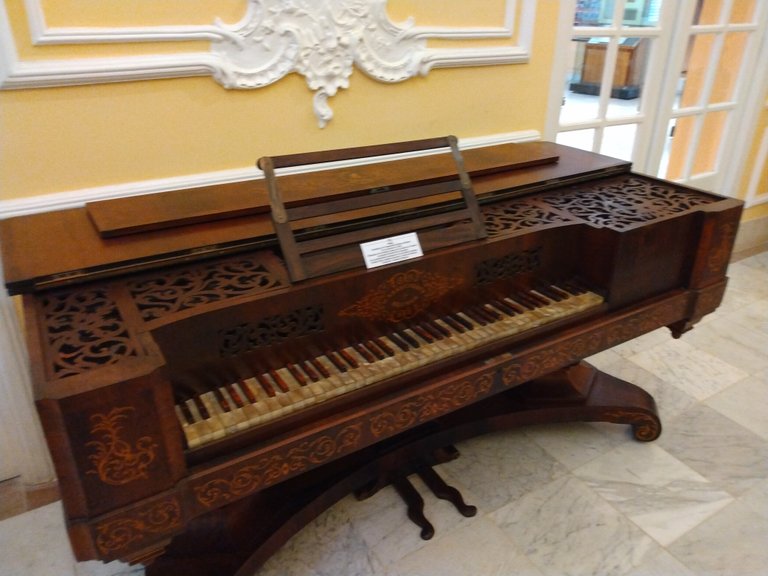
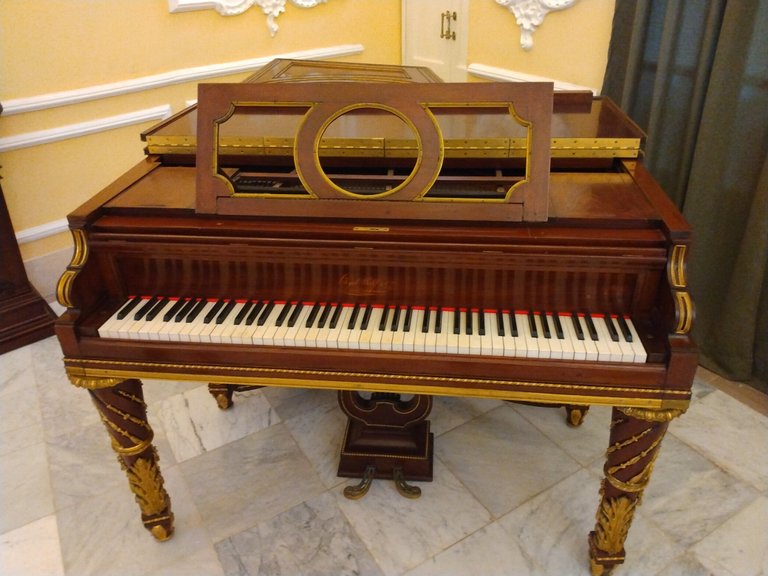
The violin was another of the instruments that began to form part of the music, with José White, an outstanding violinist from Matanzas, leaving an indelible mark.
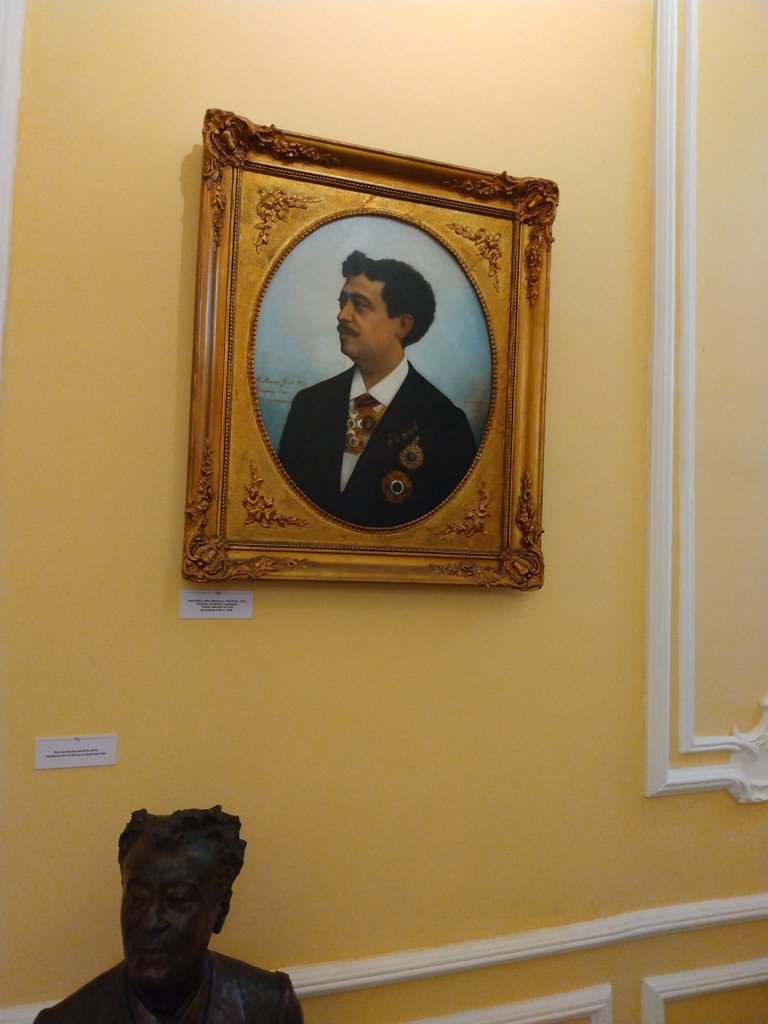
Opera was another genre that influenced Cuban musical culture. Textiles and other accessories used by opera artists are exhibited here.
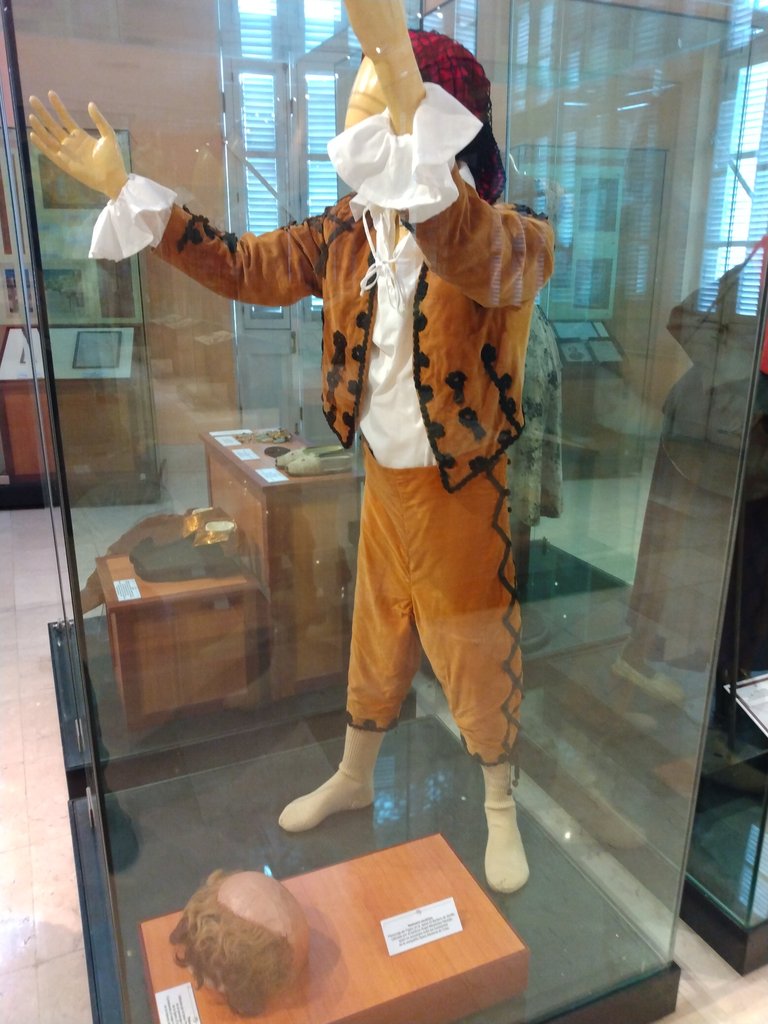
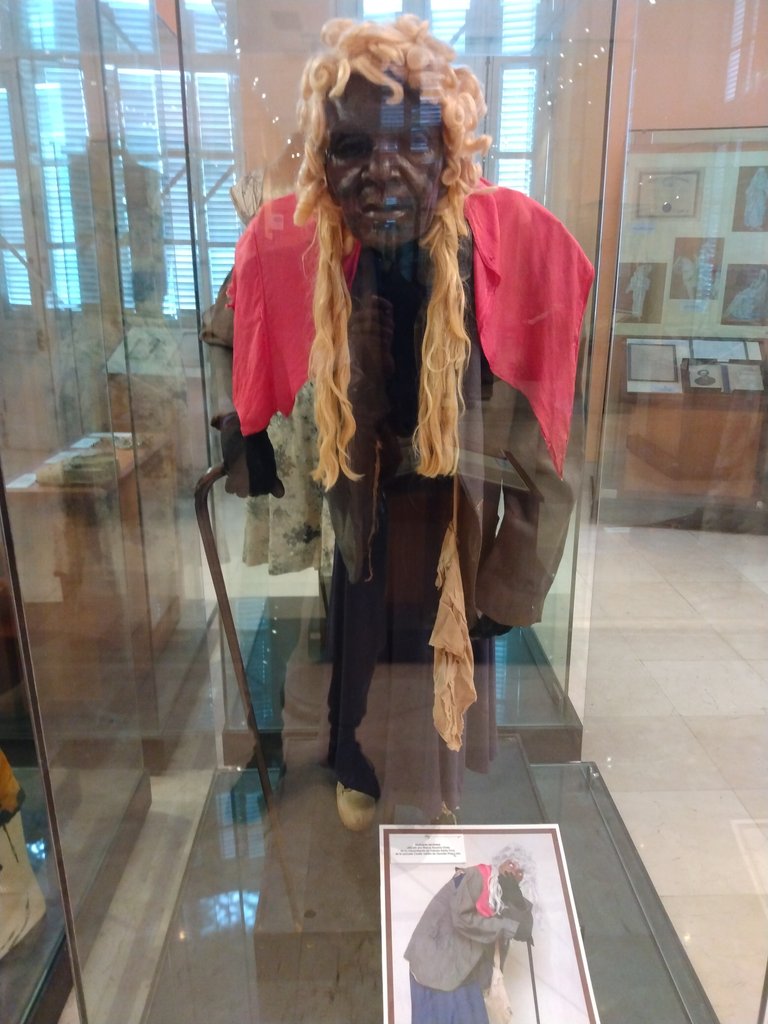
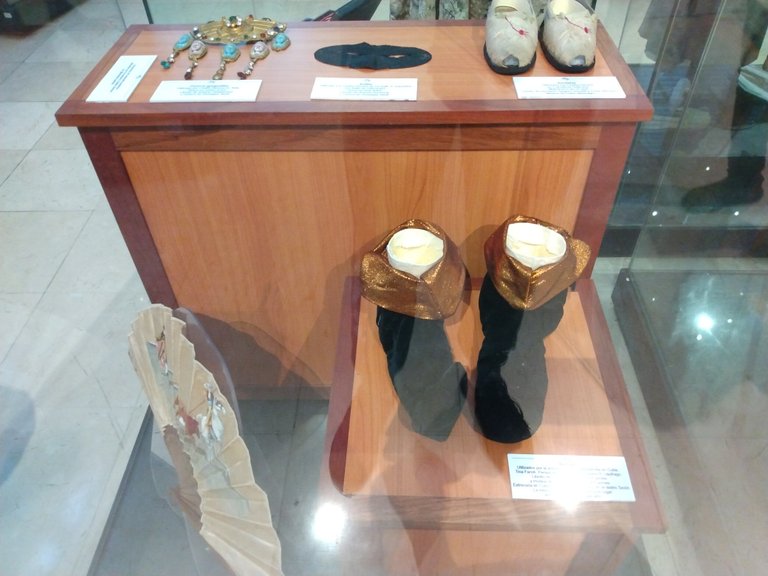
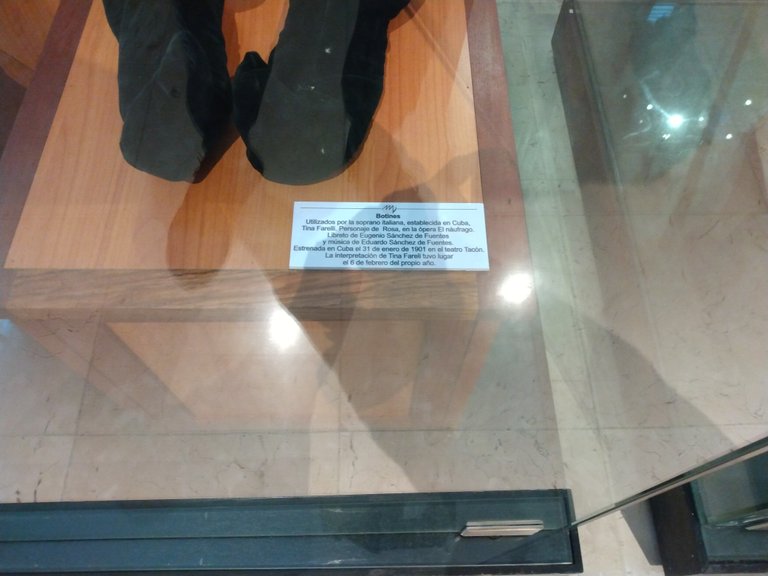
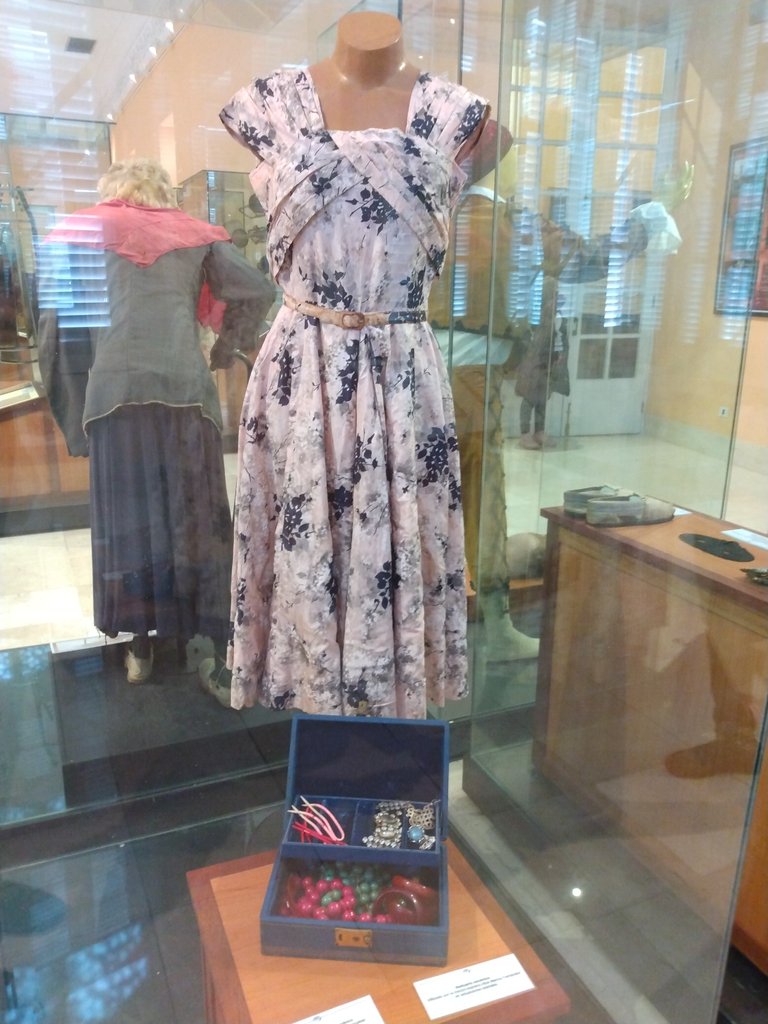
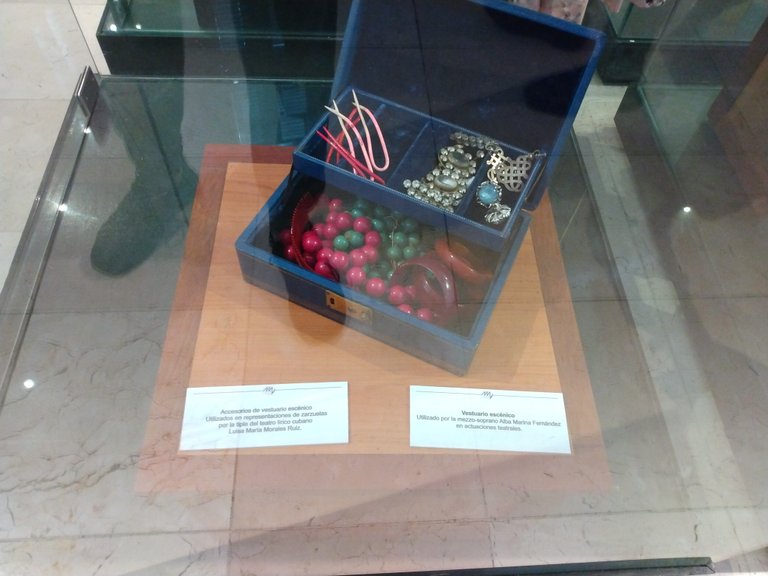
The guitar has been present in Cuba since the mid-16th century. In the 18th century, it was already frequently played in various sectors of society.
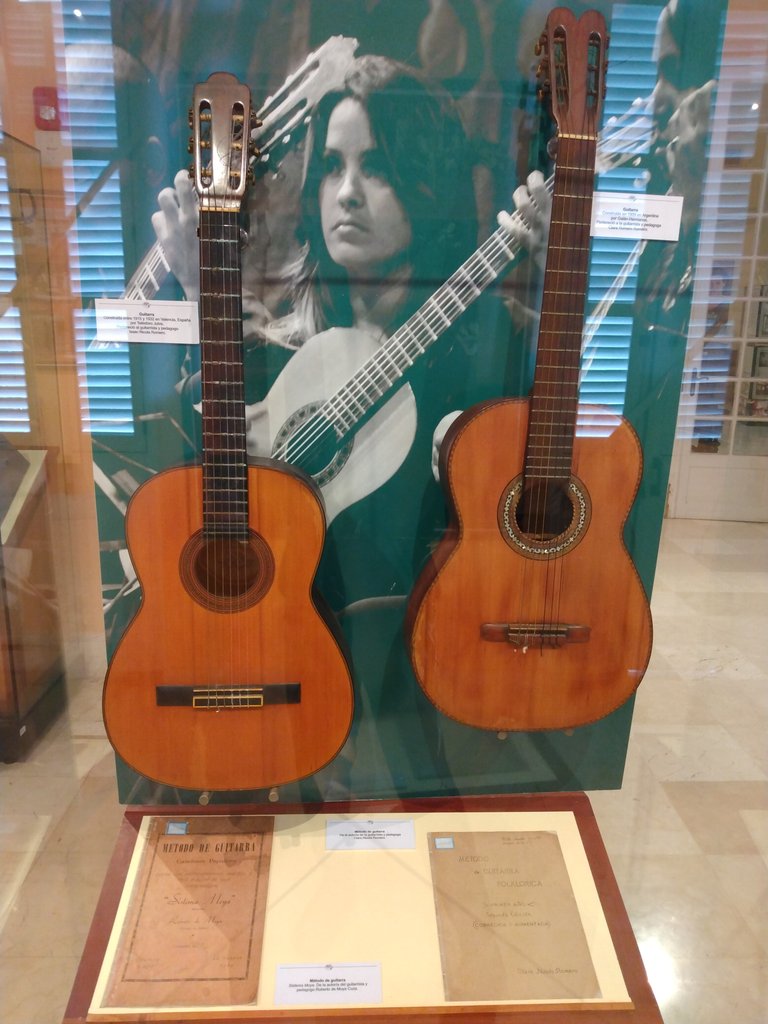
Initially, band music was used for political events, but from 1959 onwards this changed to popular dance music, and this is when important bands such as the National Symphony Orchestra and other symphonic groups emerged.
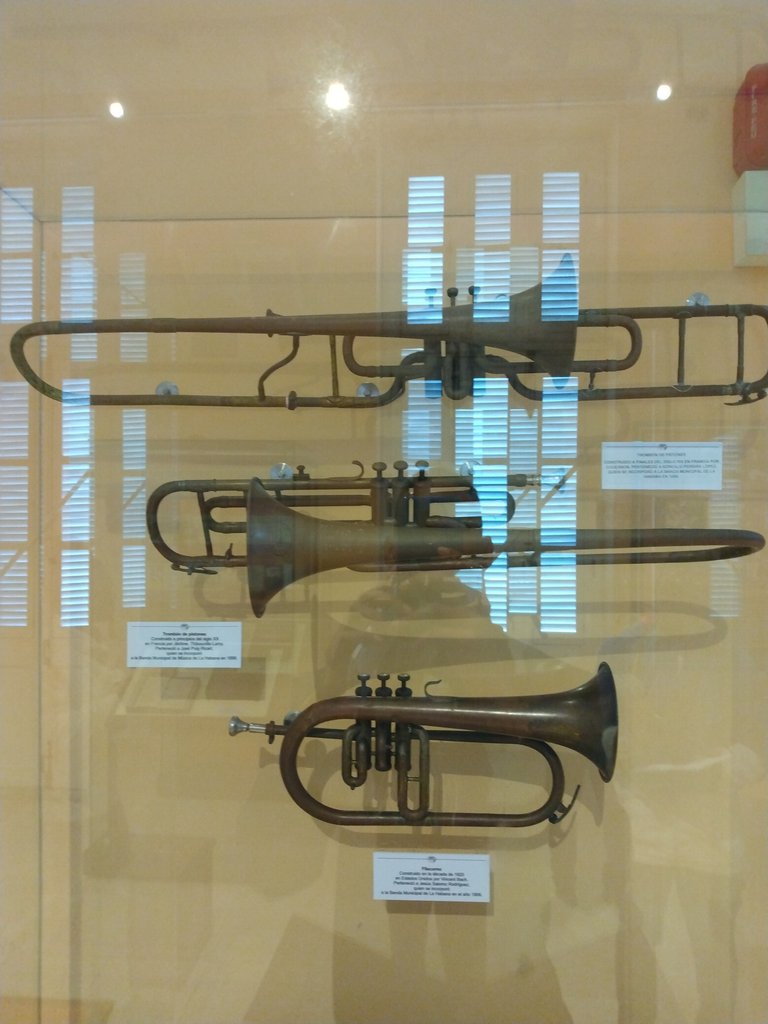
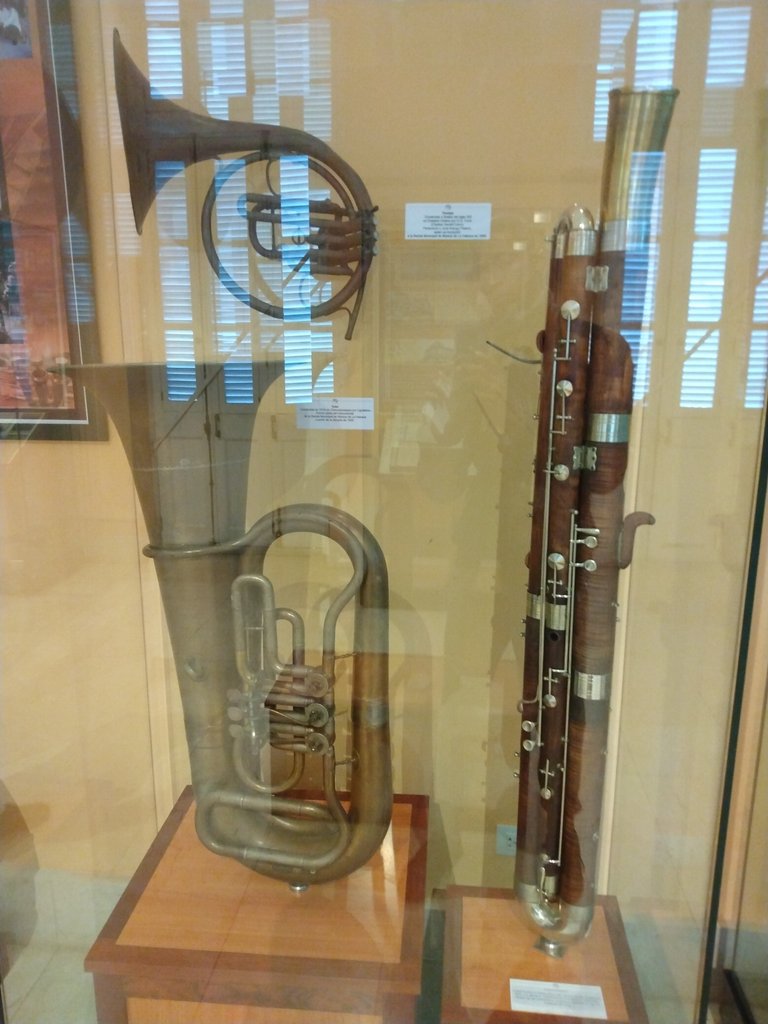
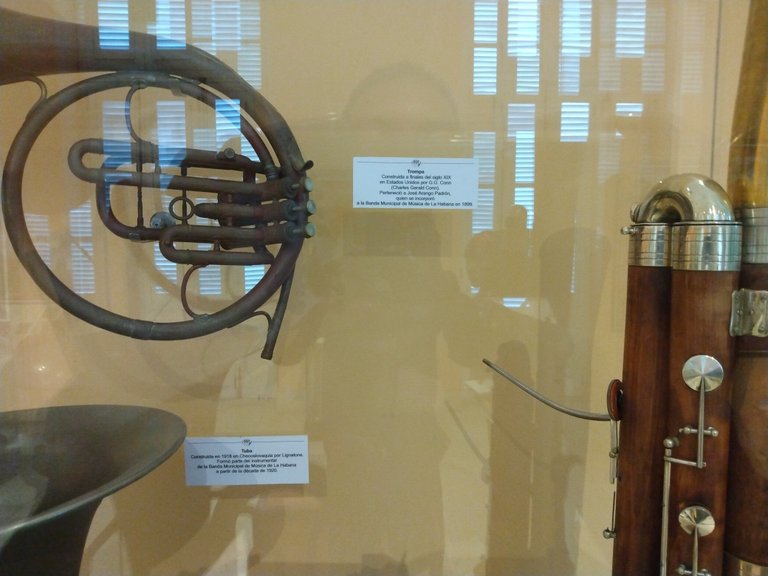
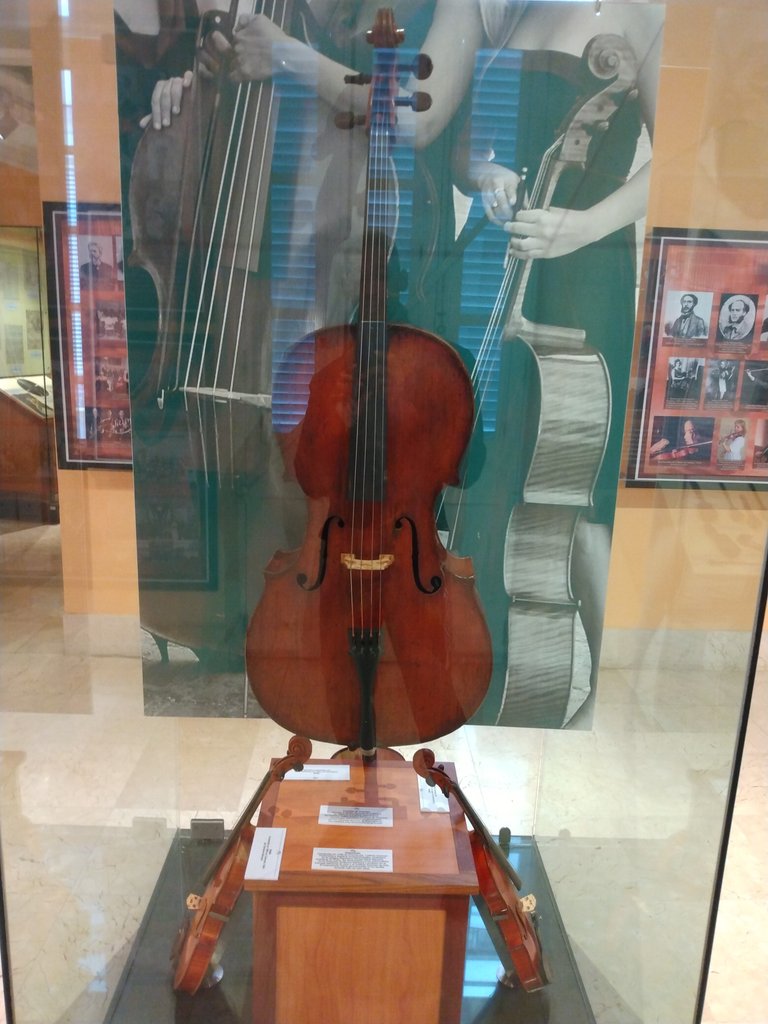
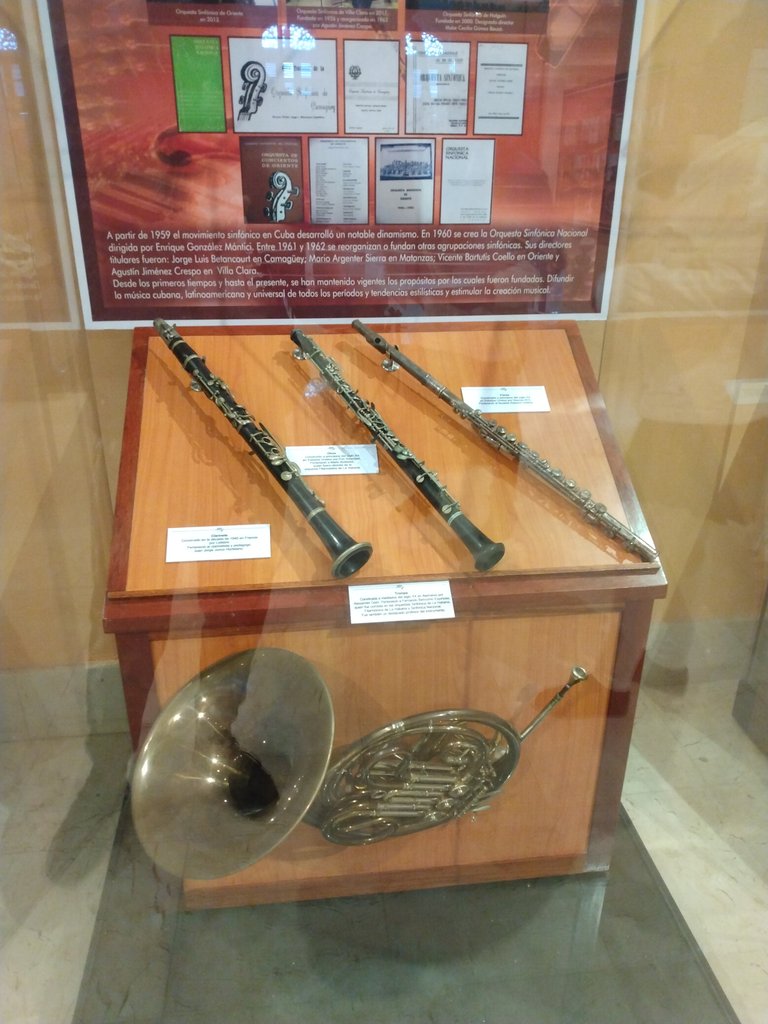
Then we entered the room dedicated to genres such as trova, filin and nueva trova. Cuban trova has its roots in the mid-19th century, emerging mainly in Santiago de Cuba. It was characterised by its poetic lyrics and its relationship with popular traditions. In its evolution, it gave rise to the Nueva Trova movement in the 1970s, in the midst of the Cuban Revolution, and its main themes are social and political. Filin emerged in 1940 in Havana and is characterised by the influence of genres such as jazz, bolero and trova. Its lyrics express emotions in a more intimate and less rigid way than bolero..
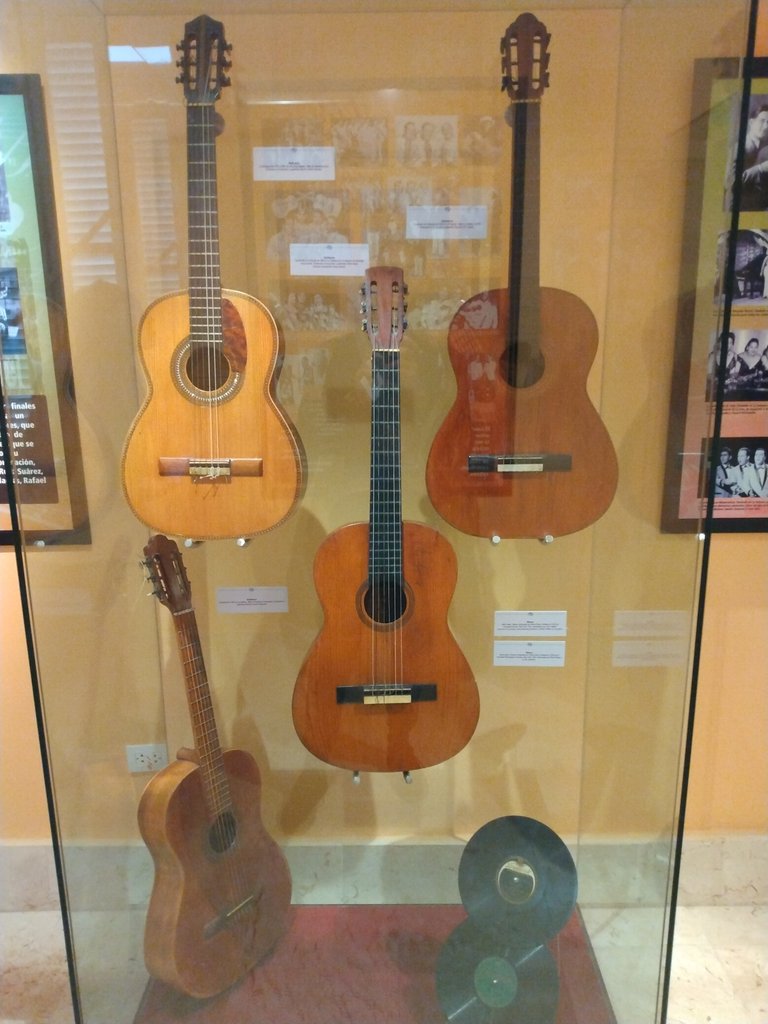
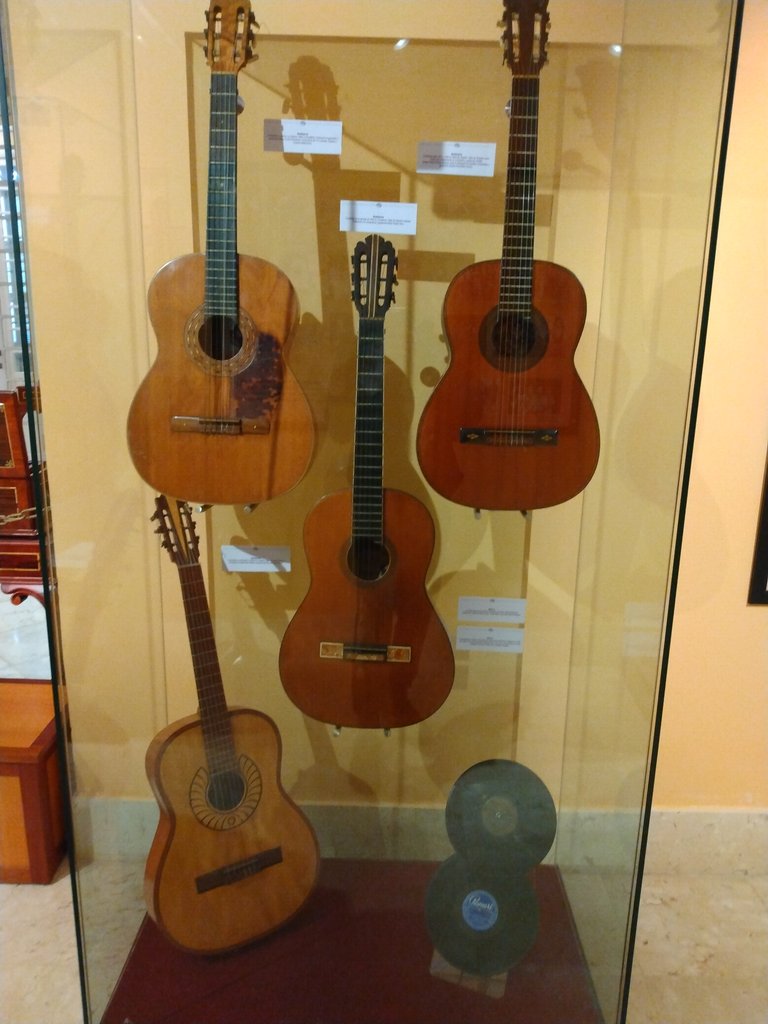
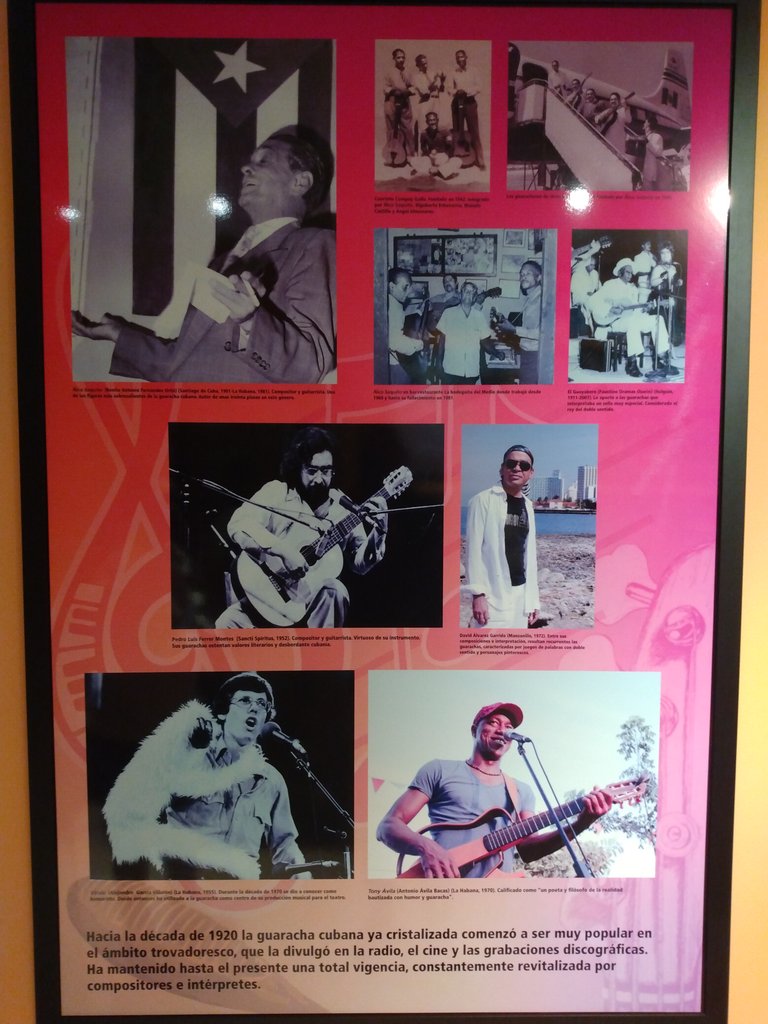
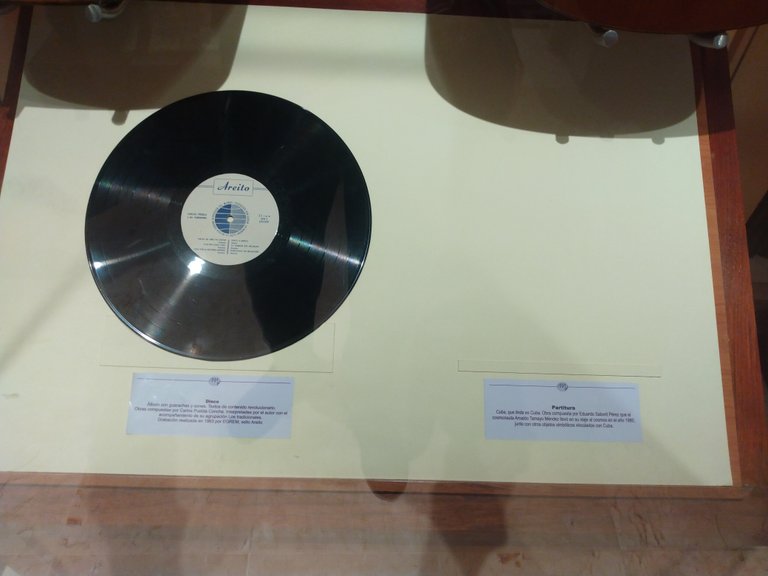
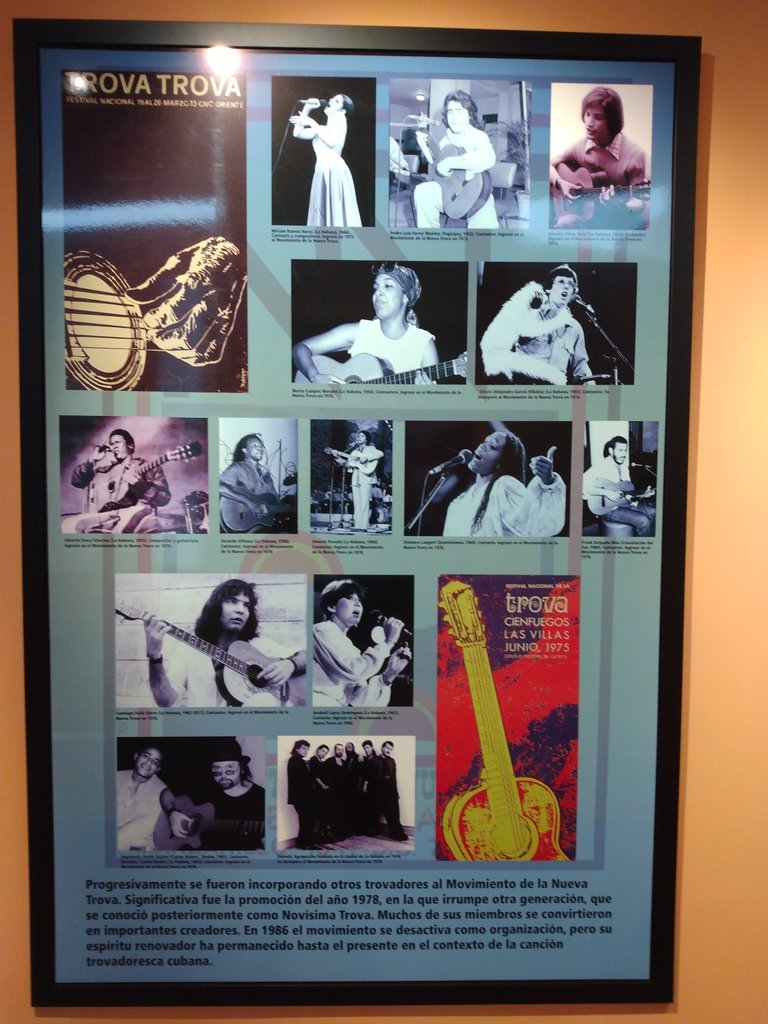
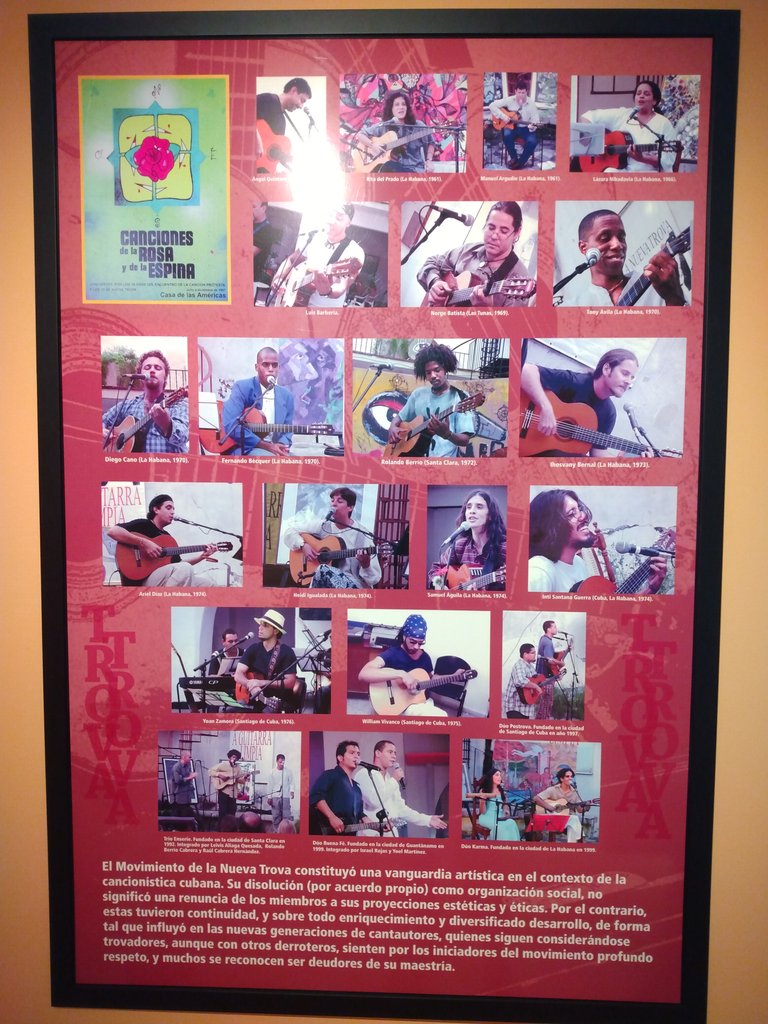
Finally, we come to the last exhibition room, where a collection of pieces and instruments used in popular dance music genres from Cuba, such as the Cha-Chá, Pilón, Mozambique and the Mambo, is on display.
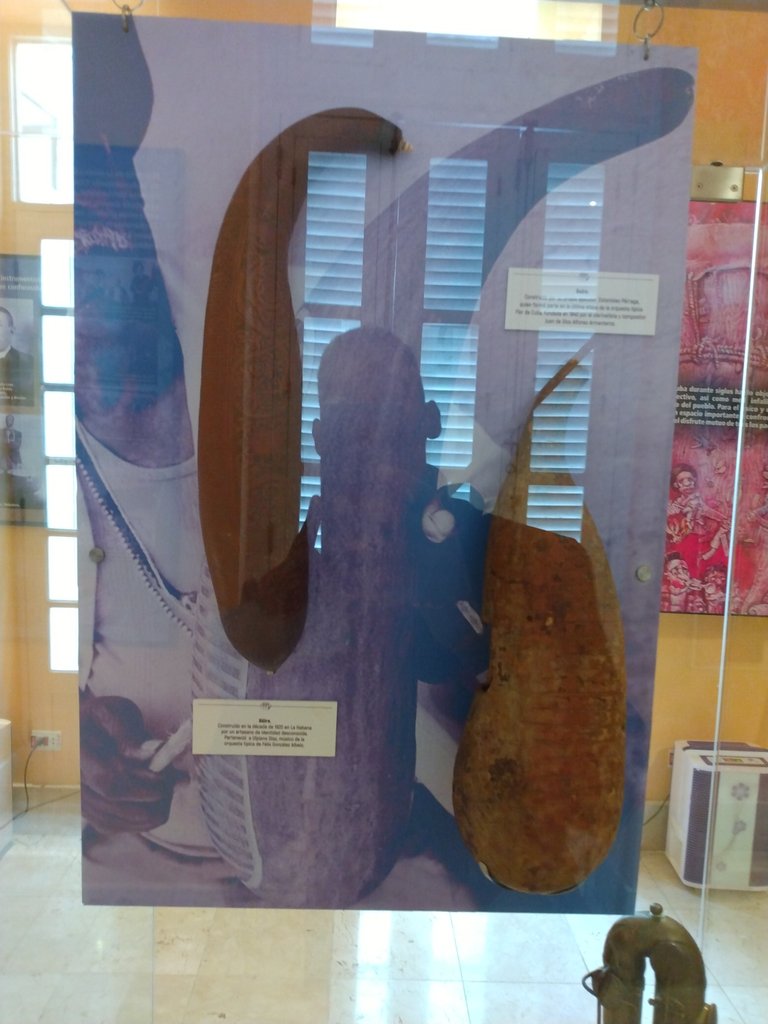

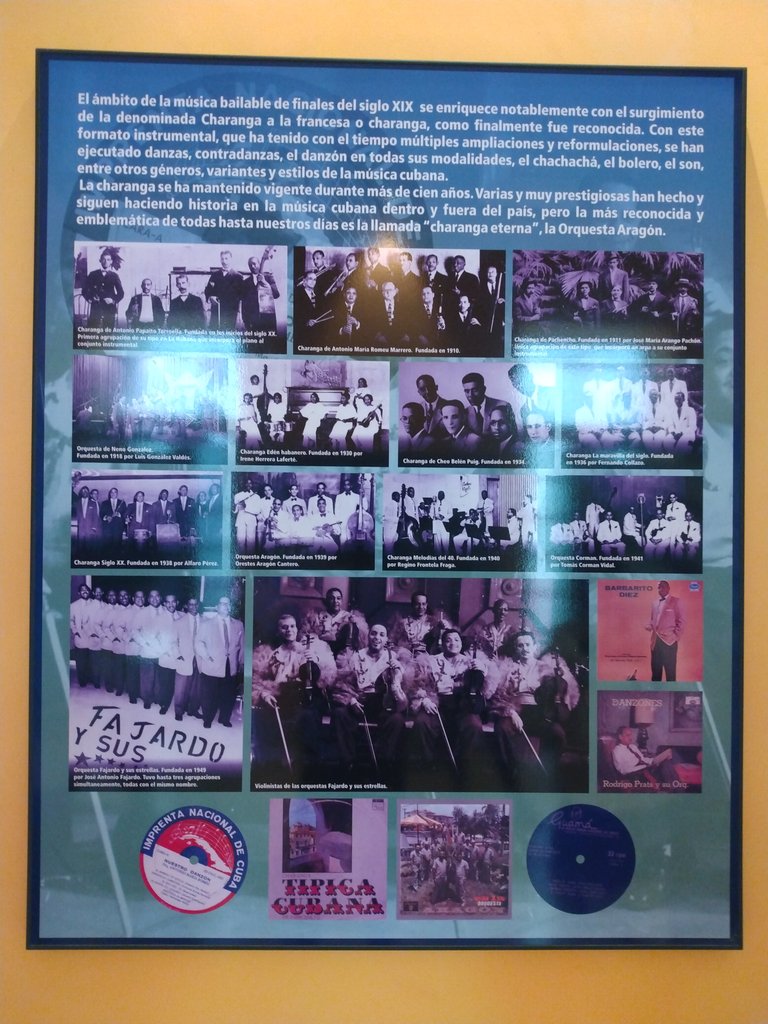

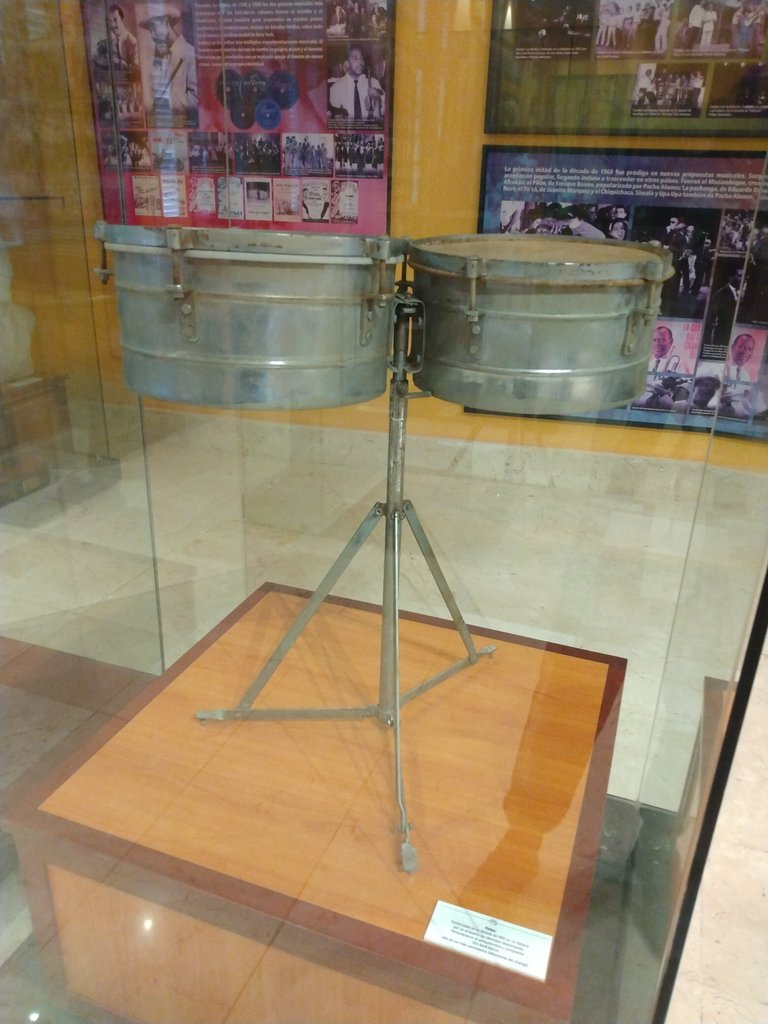
And so, dear readers, this is the end of our musical journey. I hope you enjoyed it and don't miss the opportunity to visit this interesting museum. Thank you very much for your time. See you on the next tour.
All photos are mine, taken with my Moto g play (2021) mobile phone.
Translated at DeepL.
Versión en español
Hola querida comunidad de viajeros. Hace una semana atrás visite un interesantísimo museo en La Habana que abrió nuevamente al público después de un tiempo de restauración. Se trata del Museo Nacional de la Música Cubana, como saben Cuba es un país que ostenta de un alto valor cultural y patrimonial, y uno de ellos es la música cubana conformada por un ajiaco de ritmos procedentes de diferentes regiones del planeta, tanto de Europa, África, el Caribe, Norteamérica y Asia. Este Museo se encuentra en una lujosa mansión colonial de 1905 y que era la propiedad de un rico comerciante. Existe una valiosa colección de instrumentos musicales correspondientes a las principales etapas que ha tenido la música desde el tiempo de la comunidad primitiva hasta la actualidad. Si está de paso por la capital les exhorto a que lo visiten se encuentra en la calle Capdevilla No. 1 entre Habana y Aguiar, pertenecientes al municipio Habana Vieja.
El Museo está estructurado en dos plantas, donde en la planta baja tenemos el lobby y las salas correspondientes a las etapas colonial y la república, mientras que en la segunda planta está dedicada fundamentalmente a la etapa de la Revolución, Nueva Trova y Contemporánea.
En el lobby nos encontramos con un órgano de cilindro que se usaba a principios del siglo XX.
Al lado se encuentra una las notas originales del himno nacional de Cuba, escrito por Perucho Figueredo en 1867.
También podemos ver una llamativa pintura mural que hace homenaje a Perucho Figueredo.
Iniciamos nuestro recorrido con la colección de instrumentos musicales rústico que utilizaron los primeros habitantes de la isla de Cuba. Dónde podemos ver cómo usaron materiales disponibles en su medio como madera, huesos, etc, para expresar su arte musical.
Luego que la población aborigen fue exterminada a raíz de la intensa explotación por parte de los colonizadores españoles, se necesitaba de nueva mano de obra por lo que llegaron a Cuba esclavos procedentes del continente africano. Y es aquí donde comienza la mezcla con el folklore africano, incorporándose instrumentos y ritmos propios de la cultura yoruba
Colecciones de tambores y otros instrumentos musicales utilizados durante los bailes ceremoniales en las religiones yoruba.
Colecciones de tambores y otros instrumentos musicales usados durante los bailes ceremoniales en las religiones yoruba y abakuá.
Con la incorporación de mano de obra esclava procedente de Haití, se sumaron otros instrumentos de percusión semejantes a los de África. Dando surgimiento a la sonoridad conocida como Tumba Francesa. Esta migración comenzó en el oriente de Cuba para luego extenderse al resto del país.
La incorporación de instrumentos de cuerda como el laúd, la guitarra y el tres durante la etapas colonial y pre republicana en los siglos del XVI-XIX. Surge en la región central del país un rítmo muy autóctono conocido como el punto guajiro o cubano, que identifica al campesinado cubano. Dentro de este ritmo destacaron figuras como Celina González y Jesús Orta Ruiz (Indio Naborí). Con el tiempo se fueron incorporando otros instrumentos como la clave, el bongó y la tumbadora. Es importante destacar que en ese periodo surgieron géneros como la contradanza y el zapateo.
Traje típico utilizado por las mujeres al bailar el punto cubano. En este caso se observa el vestido que usaba Celina Gonzáles.
Posters con imágenes de la afamada Celina Gonzáles y su grupo musical.
Jesús Orta Ruiz, también conocido como "El Indio Naborí", fue un destacado poeta y decimista cubano.
Instrumentos que comúnmente acompañan al Punto Cubano.
Durante el siglo XIX, los compositores cubanos de géneros como la contradanza, danzas y danzonetes, donde concurrían negros y mulatos, contribuyeron enormemente al desarrollo del pianismo, convirtiéndolo en parte de la idiosincrasia nacional.
He aquí algunas de las partituras clásicas compuestas en esa época.
Una vasta colección de pianos de diferentes países se exhibe en el museo.
El violín fué otro de los instrumentos que empezaron a formar parte de la música cubana destacándose José White, destacado violinista matancero, que dejó una huella imborrable.
La ópera fué otros de lo género que tuvo su influencia en la cultura musical cubana. Aquí se exponen piezas textiles y otros accesorios usados por los artistas de ópera.
En Cuba, ha estado presente la guitarra desde mediados del XVI. En el siglo XVIII ya era frecuente su ejecución en diversos sectores de la sociedad.
Inicialmente, la música de banda era utilizada en actos políticos, pero a partir de 1959 eso cambió y pasó a un plano de la música popular bailable, he aquí cuando surgen bandas musicales importantes como la Orquesta Sinfónica Nacional y otras agrupaciones sinfónicas.
Luego entramos a la sala dedicada a géneros como la trova, el filin y la nueva trova.
La trova cubana tiene sus raíces a mediados del siglo XIX surgiendo principalmente en Santiago de Cuba. Se caracterizó por su lírica poética y su relación con las tradiciones populares. En su evolución dio lugar al movimiento de la Nueva Tropa en la década de los años setenta en pleno albor de la Revolución Cubana, por lo que su temática principal son temas de carácter social y político. El filin surge en 1940 en La Habana y se caracteriza por la influencia de género como jazz, bolero y trova. Y en sus letras se expresan las emociones de modo más íntimo y menos rígida que en el bolero.
Y para terminar llegamos a la última sala expositiva donde se presenta una colección de piezas e instrumentos utilizados en géneros de la música popular bailable oriundos de Cuba como son el Cha-Chá, Pilón, Mozambique y el Mambo.
Y bien estimados lectores hasta aquí nuestro recorrido musical. Espero que lo hayan disfrutado y no pierda la oportunidad de visitar este interesante museo. Muchas gracias por su tiempo. Nos vemos en el próximo recorrido.
Todas las fotos son mías, tomadas con mi teléfono móvil Moto g play (2021).
Traducido en DeepL.
You can check out this post and your own profile on the map. Be part of the Worldmappin Community and join our Discord Channel to get in touch with other travelers, ask questions or just be updated on our latest features.
This post is pure gold. I wish I could leave a longer comment, but sorry, I have to run, Buena Vista Social Club are waiting for me 😜😎🎉
Thanks brother. You are right. Best regards
Seriously, I really appreciated your post 🖤
Congratulations @reneyasmany! You have completed the following achievement on the Hive blockchain And have been rewarded with New badge(s)
Your next target is to reach 700 replies.
You can view your badges on your board and compare yourself to others in the Ranking
If you no longer want to receive notifications, reply to this comment with the word
STOPCheck out our last posts:
Thanks HiveBuzz time.
Travel Digest #2461.
Become part of our travel community:
- Join our Discord
Hiya, @glecerioberto here, just swinging by to let you know that this post made it into our Honorable Mentions in Your post has been manually curated by the @worldmappin team. If you like what we're doing, please drop by to check out all the rest of today's great posts and consider supporting other authors like yourself and us so we can keep the project going!Hello. It's a honour for me. Thank you very much for your support.
Keep up the great work 💪
!discovery 30
This post was shared and voted inside the discord by the curators team of discovery-it
Join our Community and follow our Curation Trail
Discovery-it is also a Witness, vote for us here
Delegate to us for passive income. Check our 80% fee-back Program
A country like Cuba where music is breathed is worthy to have a museum like this, no doubt it is of utmost importance to safeguard the musical history of the country. Greetings !
!discovery 30
Wilfred thanks for your comment. Best regards.
Que hermoso recorrido por el museo, me gustaron los vestuarios y las joyas por sus vibrantes colores.
Saludos!
Muchas gracias Belkis. Me alegra que le haya gustado. Saludos